We’ve been mighty impressed by two off-road offerings in recent times – the Ford Everest and Isuzu MU-X. The Everest has been around for ages now, but still wins a lot of fans thanks to its long list of attributes, including good driving manners, a spacious and practical interior and a long list of standard equipment. But the Isuzu MU-X has also taken our fancy thanks to its good value for money, long active safety feature list and improved driving experience. So which is best: the 2022 Isuzu MU-X LS-T or the 2022 Ford Everest Sport? Let’s find out.
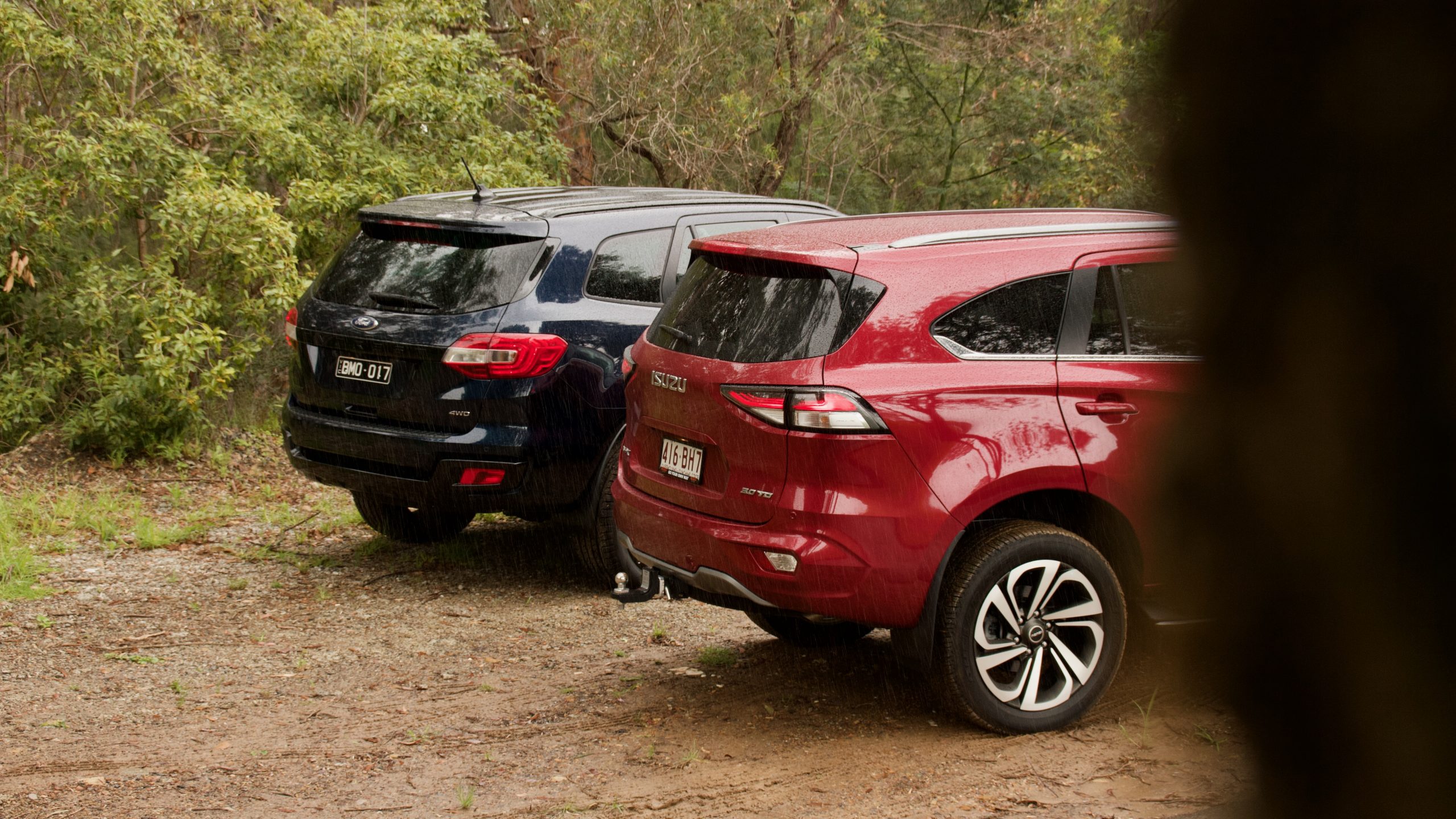
We’re testing the top-spec MU-X here, which is priced at $65,900 plus on-road costs. But because Ford wants to compete with both the Toyota Fortuner and more expensive Toyota Prado with one car, its Everest pricing hits much higher figures than the MU-X. As such, we chose the second-from-top Everest Sport to compete against the MU-X LS-T – choosing the top-spec Everest Titanium adds another $10,000 to the price.
Price & Equipment:
Priced at $65,900 plus on-road costs, the 2022 Isuzu MU-X LS-T 4×4 is $1,510 more expensive than the $64,390 plus on-road costs 2022 Ford Everest Sport Bi-Turbo 4×4 – but include drive away pricing into the mix, and the tables are turned. Thanks to a permanent $63,990 drive away special price for the MU-X LS-T 4×4, it ends up being a significant $5,852 less expensive than the $69,842 drive away Ford.
So the Isuzu costs less to buy, but it also includes more standard equipment. Not a good start for the Ford. Both cars include features such as 20-inch wheels, bi-LED headlights, auto lights and wipers, heated and electric-folding mirrors, dual-zone climate control, keyless entry and start, leather upholstery with heated steering wheels and gear knobs, big touchscreens with Apple CarPlay and Android Auto, satellite navigation, digital radio, eight-speaker sound systems, powered driver’s seats, electric tailgates, rear air vents with fan speed control, rear centre arm rests and full-size spare wheels.
Shared safety equipment includes auto emergency braking with pedestrian detection, lane keep assistance, auto high beam, front and rear parking sensors, a reversing camera, rollover mitigation, trailer sway control, driver attention monitoring, speed sign recognition and adaptive cruise control with stop and go functionality.
But from here, the Isuzu’s longer equipment list proves how much better value for money it is. In addition to the Ford’s list, the Isuzu includes an extra airbag (a front centre unit), lane trace assist, blind-spot monitoring with rear cross-traffic alert, cyclist and intersection assist, as well as a higher speed threshold (160km/h versus 80km/h) for the automatic braking system, automatic post-collision braking, misacceleration braking assist, windshield washers in the wiper arms, heated rear seats, an electric parking brake, an electric front passenger seat and wireless Apple CarPlay and Android Auto.
What does the Ford add over the Isuzu? Live traffic for the navigation system, a smartphone app to access some of the Everest’s functions, kick-to-open functionality for the electric tailgate, 110V socket in the rear seat, emergency assist that automatically calls emergency services in the case of an accident (and your phone is connected) and headlights that are activated by rain and gas bonnet struts – hardly enough to overcome the Isuzu’s massively superior value equation.
What colours can you get each car in? The Isuzu The only standard no cost colour available is ‘Mineral White’, while all other colours attract a $500 price increase. These colours include ‘Basalt Black’, ‘Cobalt Blue’, ‘Jasper Brown’, ‘Obsidian Grey’, ‘Mercury Silver’, ‘Moonstone White Pearl’ and our test vehicle’s ‘Magnetic Red’. Black is the sole interior colour for both cars.
The Everest Sport is available in just five colours: the no-cost ‘Arctic White’, as well as ‘Aluminium’, ‘Shadow Black’, ‘Meteor Grey’ and our test car’s ‘Deep Crystal Blue’ for $650 extra. The Ford can also be optioned with a $300 Premium Pack, which adds electric folding third row seats – we think this should be standard kit, and it’s not at all available on the MU-X.
Price & Equipment winner: 2022 Isuzu MU-X LS-T
Performance & Economy:
As with the utes that they’re based on (the D-Max and Ranger), both the MU-X and Everest are available solely with four-cylinder turbo-diesel engines in either two- or four-wheel drive and with automatic transmissions as standard. But they do have differences – the Isuzu’s is a single-turbo 140kW/450Nm 3.0-litre unit and the Ford’s is a smaller 157kW/500Nm 2.0-litre engine with two turbochargers. The Isuzu has a six-speed torque converter automatic transmission – the Everest adds four gears for 10 in total.
As we reported in our Everest Sport review, the newer 2.0-litre engine is definitely the pick in the Everest range – and in this comparison – thanks to its surprising gruntiness, efficiency and quietness in comparison to the MU-X. The 10-speed auto in the Everest can get a touch confused at times because it has so many ratios, but it’s mostly very intuitive to use.
The Isuzu’s engine is still a good unit with more than ample shove but it is a somewhat loud engine, and the ratios in the six-speed automatic are long. We think a slight output increase to around 150kW/500Nm and an eight-speed automatic would aid the MU-X’s drivability significantly. It would also likely make it more fuel efficient and quicker too.
Isuzu claims that the MU-X 4×4 uses 8.3L/100km on a combined cycle, which is 1.3L/100km more than the Everest’s 7.0L/100km score. In the real world, we found that difference to be realistic and scored 8.2L/100km in the Ford, and 9.4L/100km in the Isuzu. It’s worth noting that the Ford’s engine is Euro 6 emissions compliant and has both start stop and an AdBlue tank too.
Performance & Economy winner: 2022 Ford Everest Sport (with the 2.0-litre bi-turbo engine)
Ride & Handling:
Both the MU-X and Everest are entirely comfortable, well-mannered and easy to drive cars that anybody would feel at home driving thanks to their pleasing dynamics and safety features. But it’s the Everest that we think drives in a more car-like fashion than the MU-X, and while it can be a touch firmer over some surfaces, it settles faster and remains more comfortable. It also rolls less in corners, despite featuring a more basic rear suspension set up.
In terms of off-road ability, both the MU-X and Everest are excellent off the beaten track. We tested them in light off-road conditions and they both passed without breaking a sweat – there are differences in the details, however. The Everest has a full-time four-wheel drive system, whereas the MU-X is a part-time unit with 2H, 4H and 4L gearing for sticky situations. They both have hill descent control and an off-road mode that tightens the stability control for greater traction – but the Everest has a larger degree of variable modes within the off-road setting, including snow and mud modes with different stability settings. Both cars have locking rear differentials.
Off road, both cars can wade in up to 800mm, but the MU-X has slightly better ground clearance (235mm versus 227mm). But the Everest’s approach angle is slightly better than the MU-X, which in turn counters with a better departure angle and ramp-over angle. Tit for tat.
For towing, the Isuzu is the superior option as its 3,500kg braked towing rating is 400kg more than the Everest, though the MU-X’s gross vehicle mass is 2,900kg and the Everest’s is 3,100kg. The Everest’s tubby 2,305kg kerb weight is 130kg more than the MU-X’s 2,175kg kerb weight and their GCM is an identical 5,900kg.
Ride & Handling winner: Ford Everest Sport
Interior & Practicality:
From the outset, it’s obvious that both the 2022 Isuzu MU-X LS-T and 2022 Ford Everest Sport have spacious, practical and tech-filled interiors that would survive years of abuse from what owners could throw at them. But the Everest’s cabin – shared with the current Ford Ranger – is starting to look and feel dated, though the new model’s cabin is a big departure and is due before the end of 2022. The MU-X’s cabin is better quality thanks to more liberal use of soft touch materials and nicer leathers, and its layout is more modern with features like a larger touchscreen and an electric parking brake.
Centre of both car’s dashboards are big centre screens – the Ford’s is 8.0-inches, and the Isuzu’s is a larger 9.0-inches. Both feature lots of functionality, including satellite navigation, digital radio and Apple CarPlay and Android Auto. Despite the Isuzu featuring wireless smartphone mirroring, the Ford’s screen is superior thanks to its superior ease-of-use, its brighter colours and its quicker response time. Both cars lack wireless charging, though.
Both car’s cabins are practical with more than enough storage space – reasonable door bins, big cupholders, big gloveboxes and larger under-armrest boxes are common to both. The Isuzu has a cleverer dual-level glovebox though, and its handbrake is electric, which opens up more space.
The middle rows of both cars are comfortable and well-featured. Both cars have roof-mounted vents for both the middle and rear rows, while they also have fan speed controllers for both and centre arm rests with cup holders. The Isuzu has two USB-A charging ports for devices in the middle row and the Ford has a 110V power socket. The middle row seats in both cars recline, but do not slide, and the Isuzu’s folds and tumbles forward for easier third row access. Both cars are similarly roomy as well, with ample leg/knee/headroom.
The third row in both cars is definitely a kids-only zone thanks to their lack of headroom and knees-up seating position, though the Isuzu’s space is marginally larger. Both cars have curtain airbag coverage for the third row, air vents, cup holders and storage – though no charging ports.
The bootspace in the MU-X measures 311-litres with the third row erect, 1,119L in five-seat mode and a massive 2,138L with all the rear seats folded. The Ford, on the other hand, measures 249L in seven-seat mode, 876L in five-seat mode and 1,796L with all the rear seats folded – but the Isuzu is comfortably larger. Both cars feature full-size alloy spare wheels.
Interior & Practicality winner: 2022 Isuzu MU-X LS-T
Service & Warranty:
While the Ford is equipped with a five-year/unlimited km warranty, Isuzu goes a little further and gives its cars a six-year/150,000km warranty, which is great for those keeping their cars longer than five years – though the 150,000km distance limit may be annoying to some owners. Isuzu includes roadside assistance for seven years from the start, while if the Everest is serviced at a Ford dealership, it will also have up to seven years of roadside assistance.
Five years/75,000km of servicing the Everest costs a very reasonable $1,556 ($311 per service), which is $759 less than the MU-X ($2,315 over five years or $463 per service).
Service & Warranty winner: 2022 Isuzu MU-X LS-T
Which is best: the 2022 Ford Everest Sport or 2022 Isuzu MU-X LS-T?
It’s clear from this comparison that both the MU-X and Everest are accomplished products capable of safely and reliably taking your kids to school – and so much further than that. They feature roomy and good quality cabins, plenty of tech, comfortable seats, good driving manners, grunty diesel engines, lots of standard equipment (particularly the MU-X) and great aftersales programs to keep you motoring for years to come.
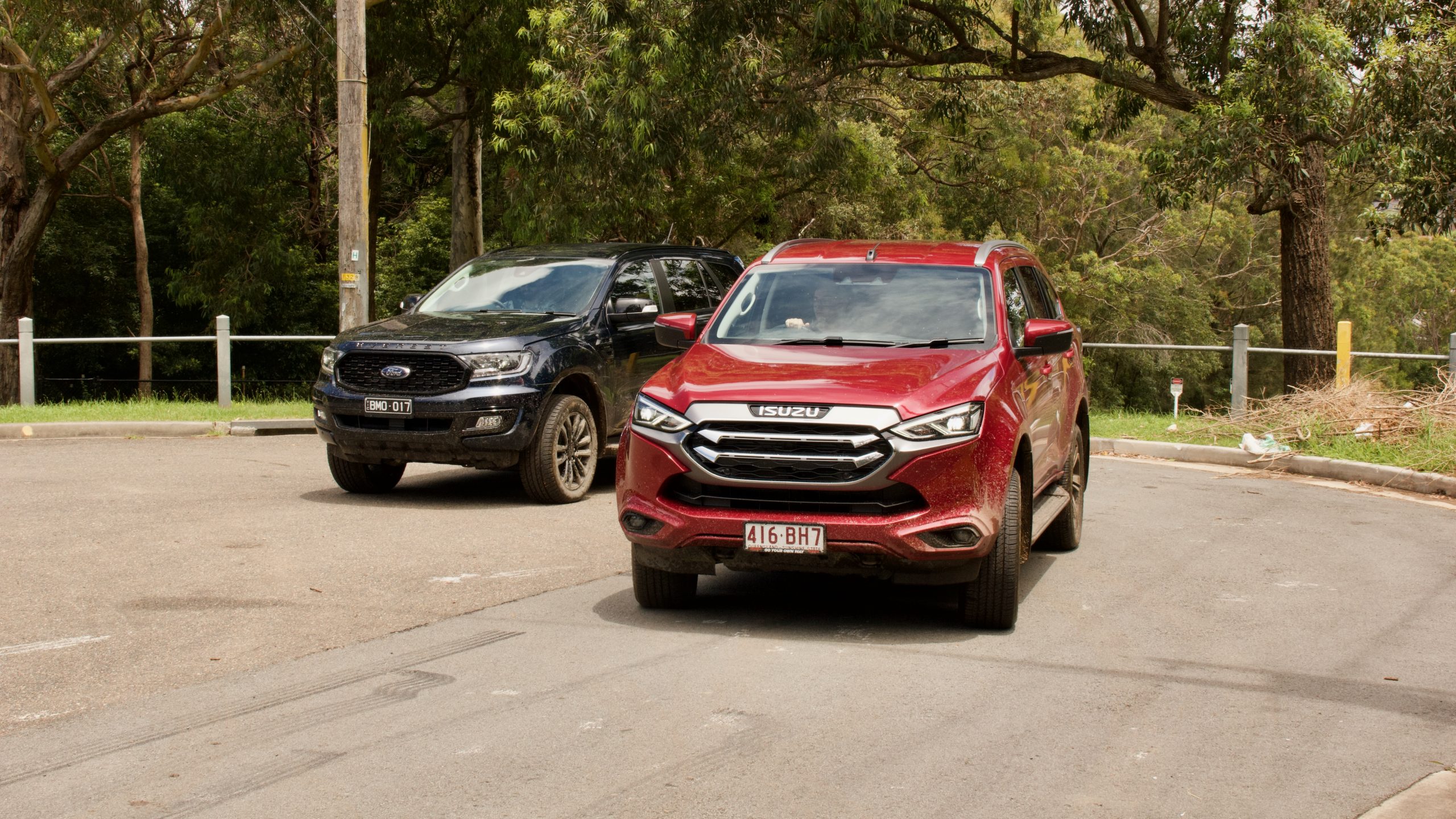
Somewhat surprisingly but also not surprising given the high level of talent that Ford’s Australian engineers, the Everest’s driving dynamics are pretty good and it feels more car-like to drive than the MU-X. The Everest’s 2.0-litre bi-turbo diesel engine is also a star, and is a preferably unit to the MU-X’s larger but more relaxed engine. Yet aside from this, the MU-X has the Everest beaten thanks to its significantly better value equation, roomier and higher quality cabin, longer warranty and more modern feel throughout. If you’re looking for an off-road driving machine that can seemingly do it all, the 2022 Isuzu MU-X LS-T is the car to buy.
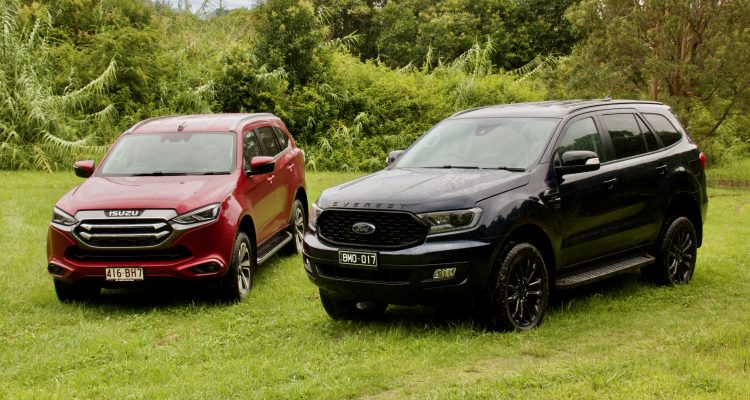
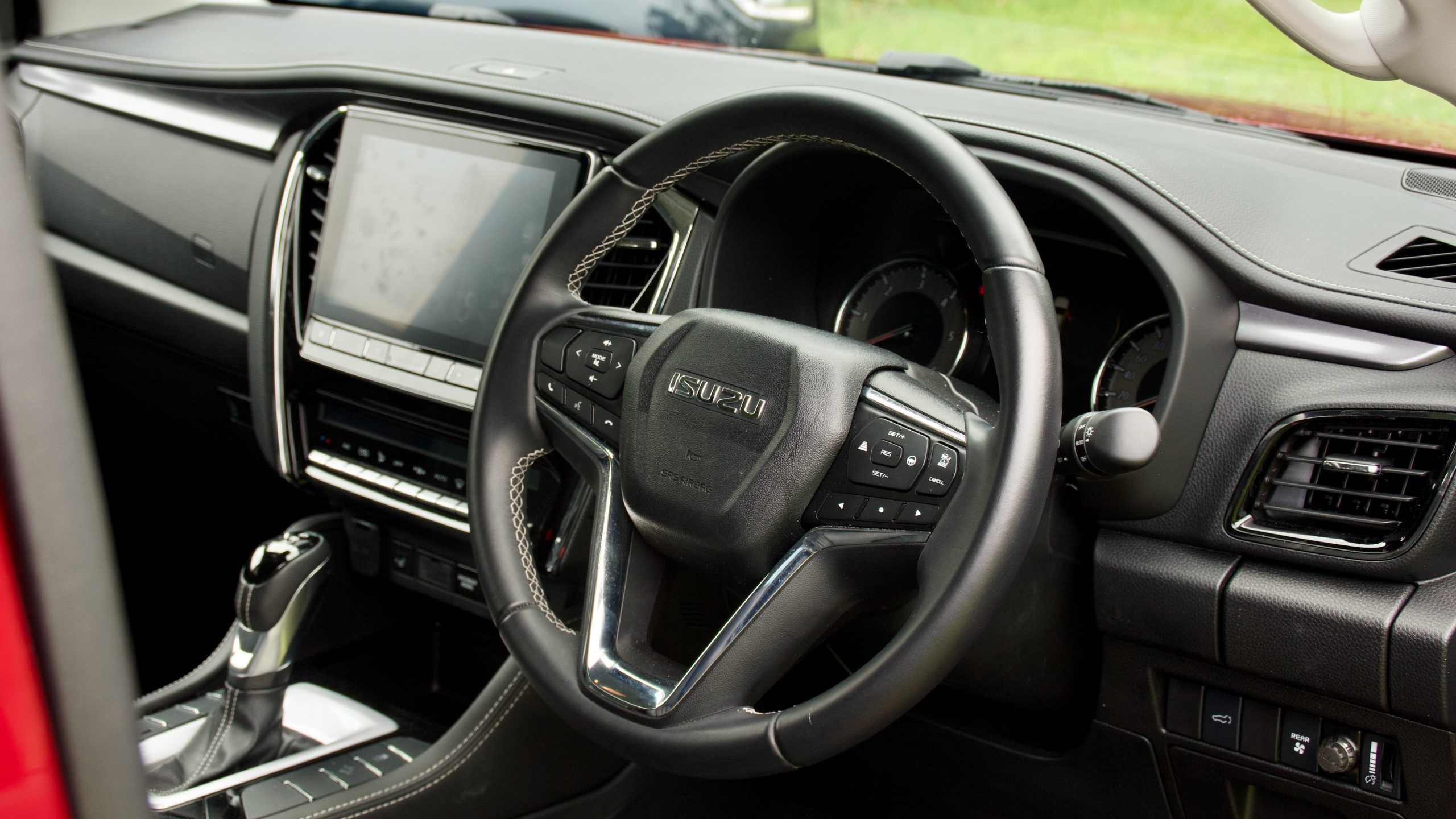
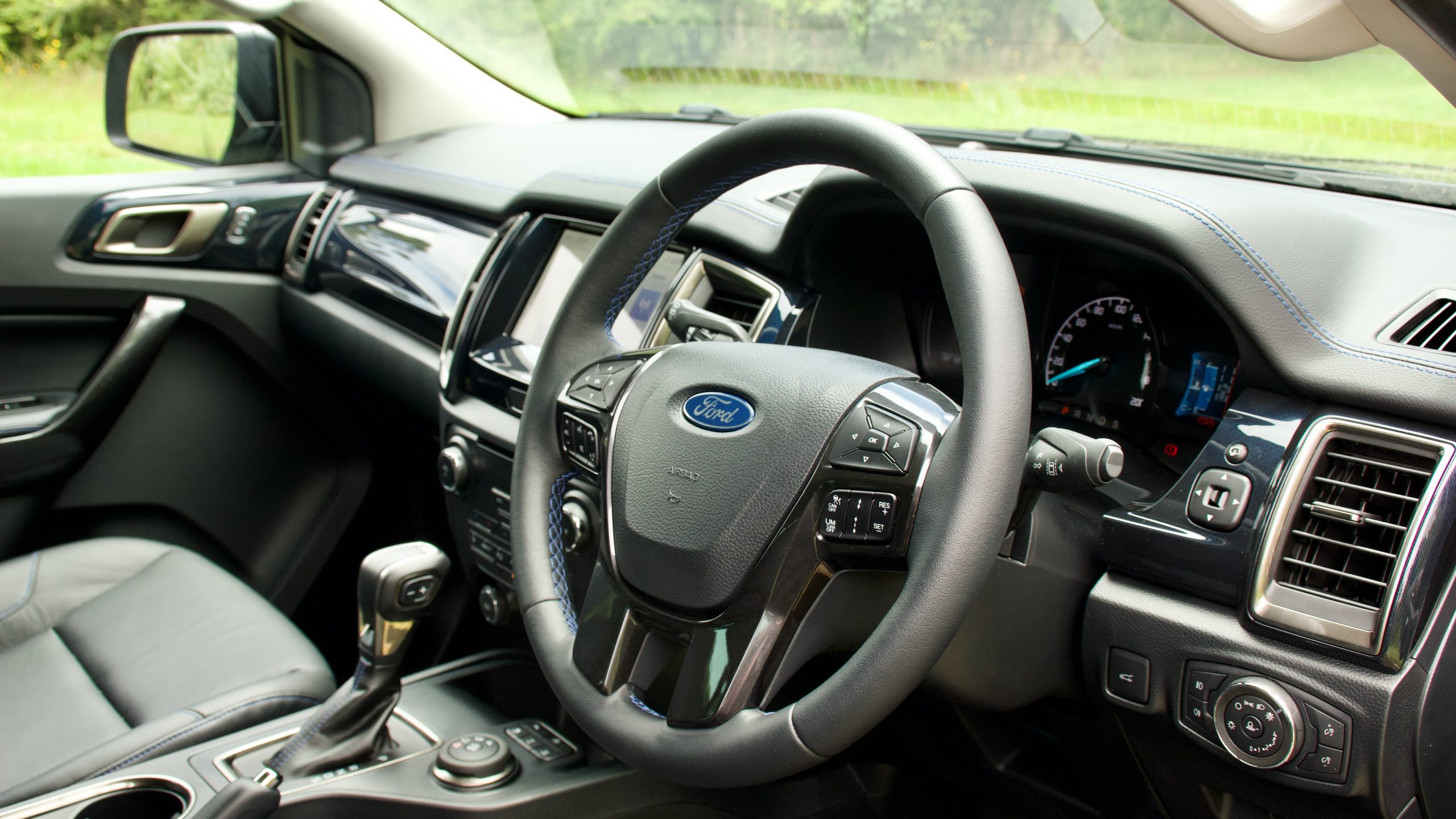
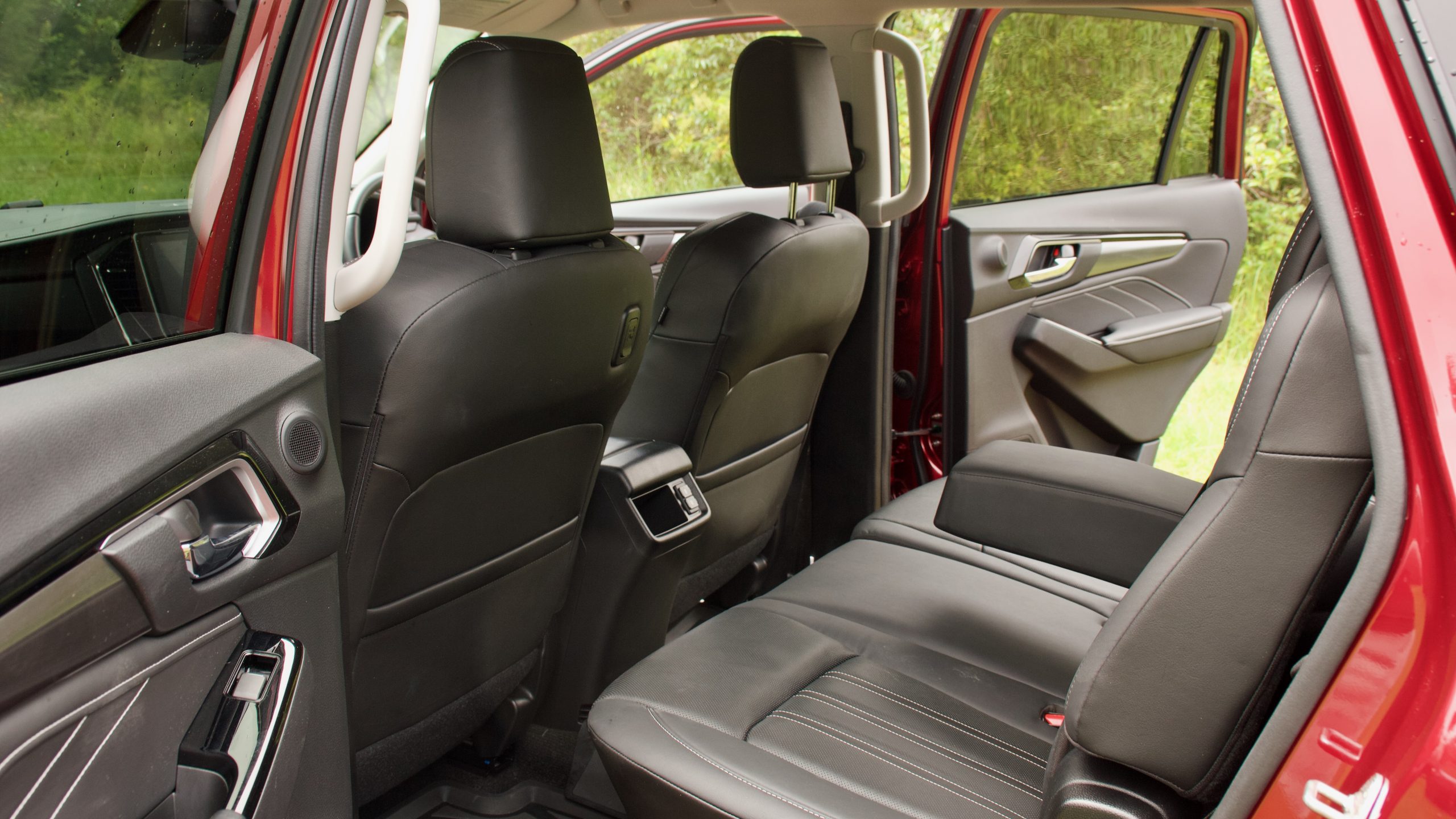
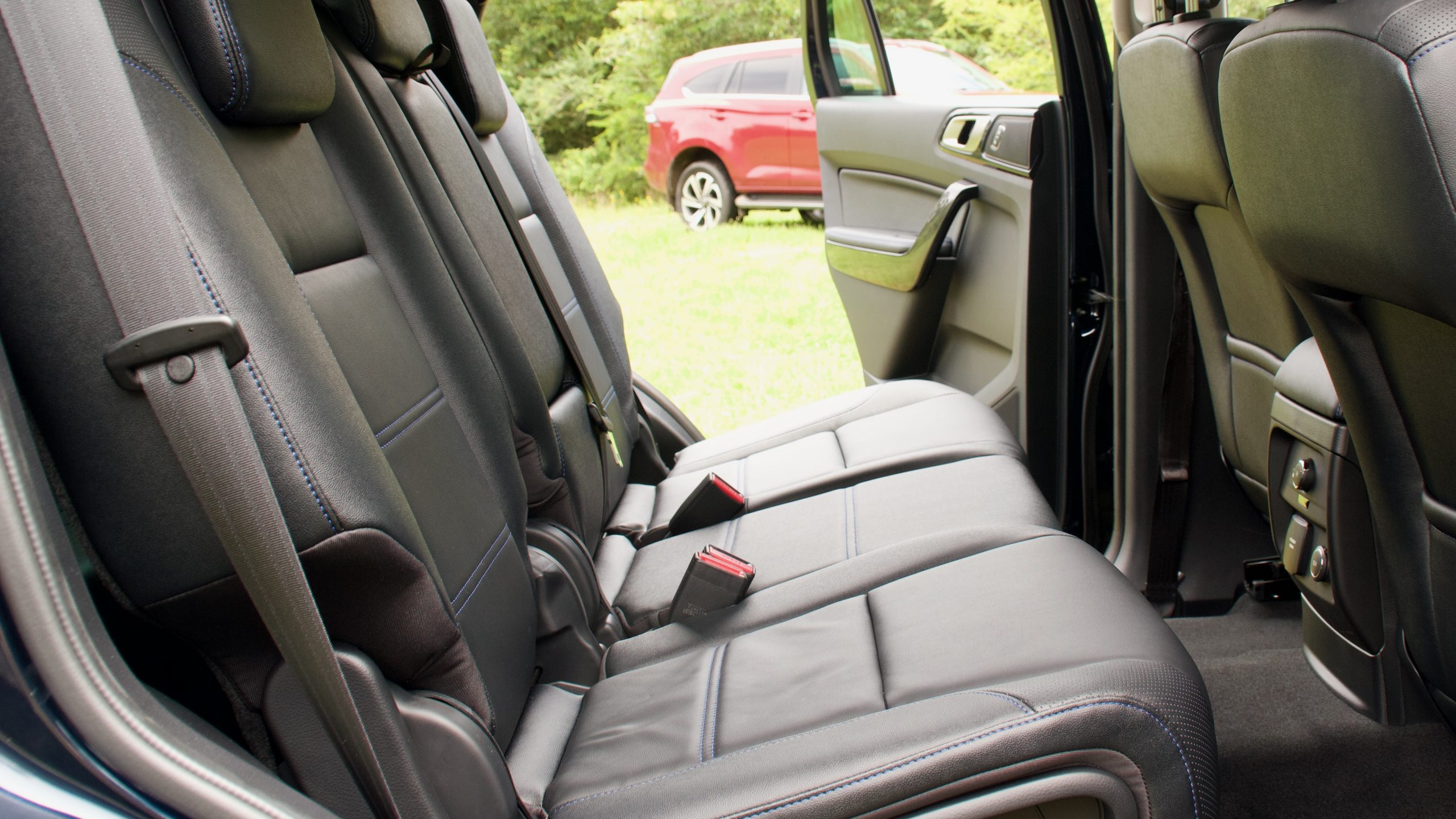
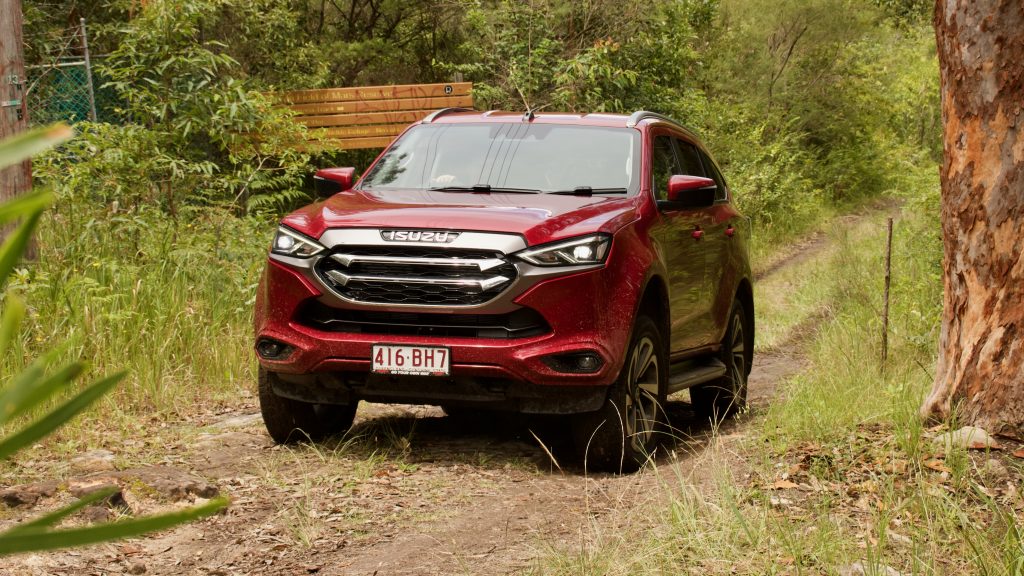
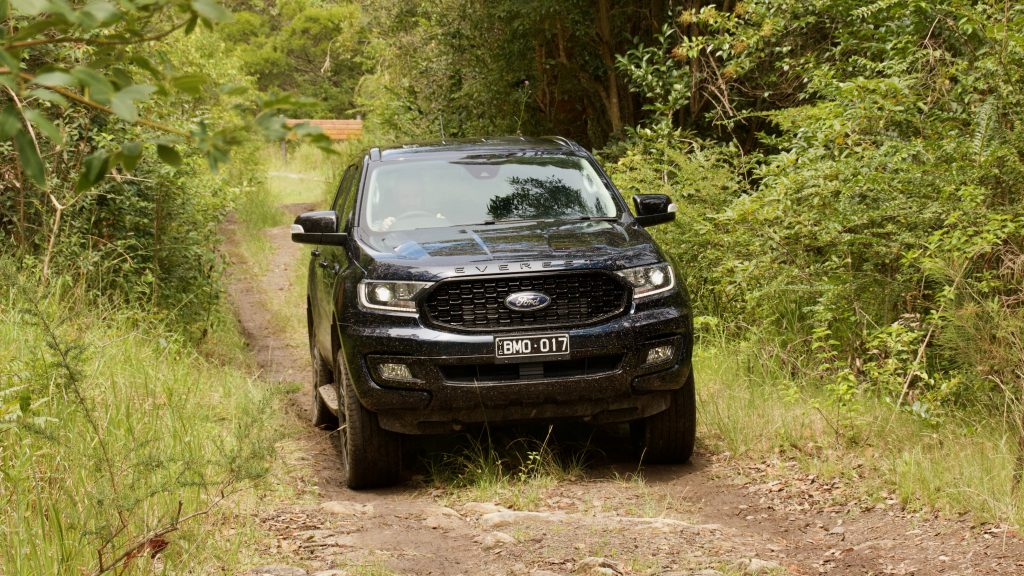
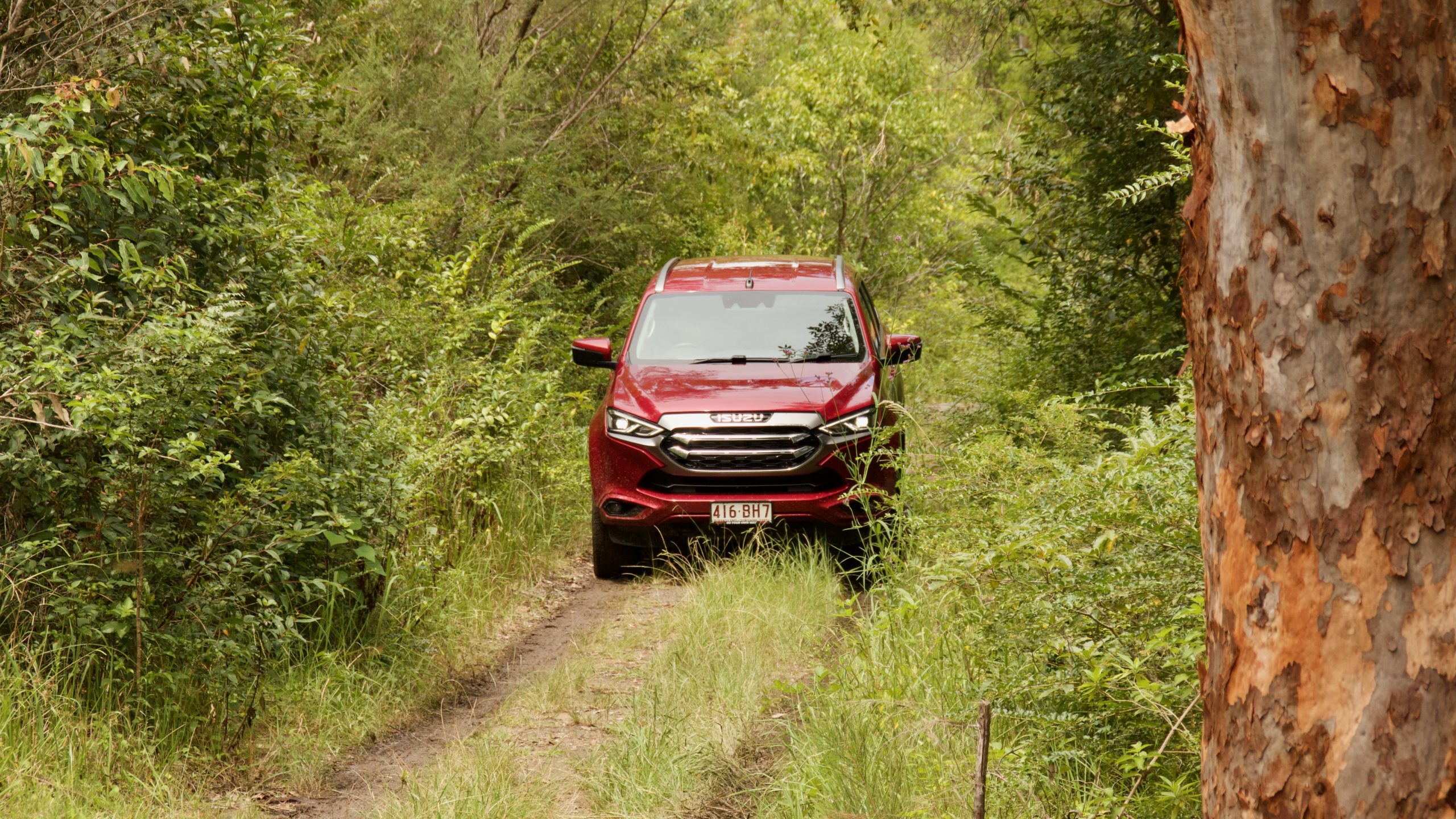
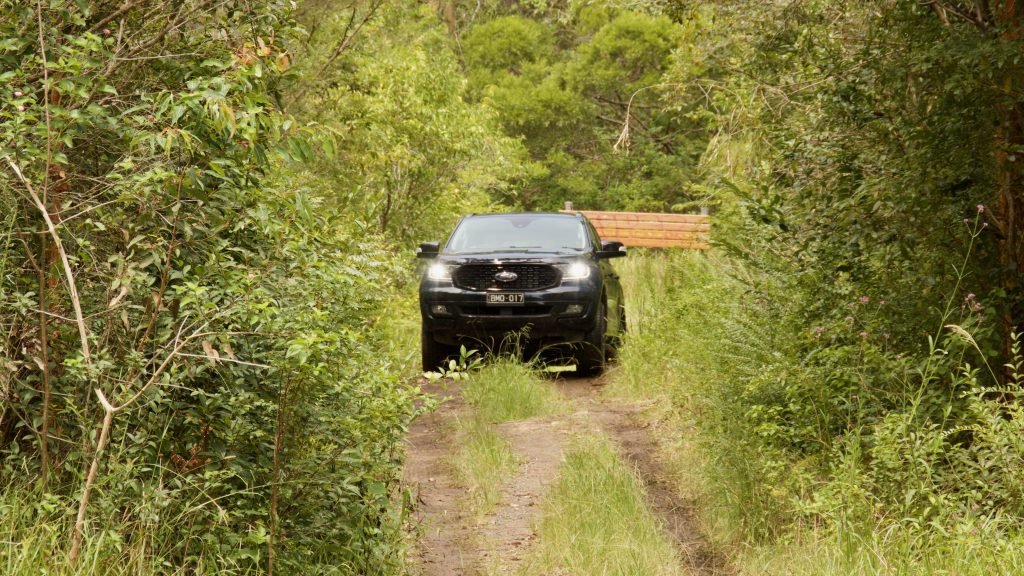
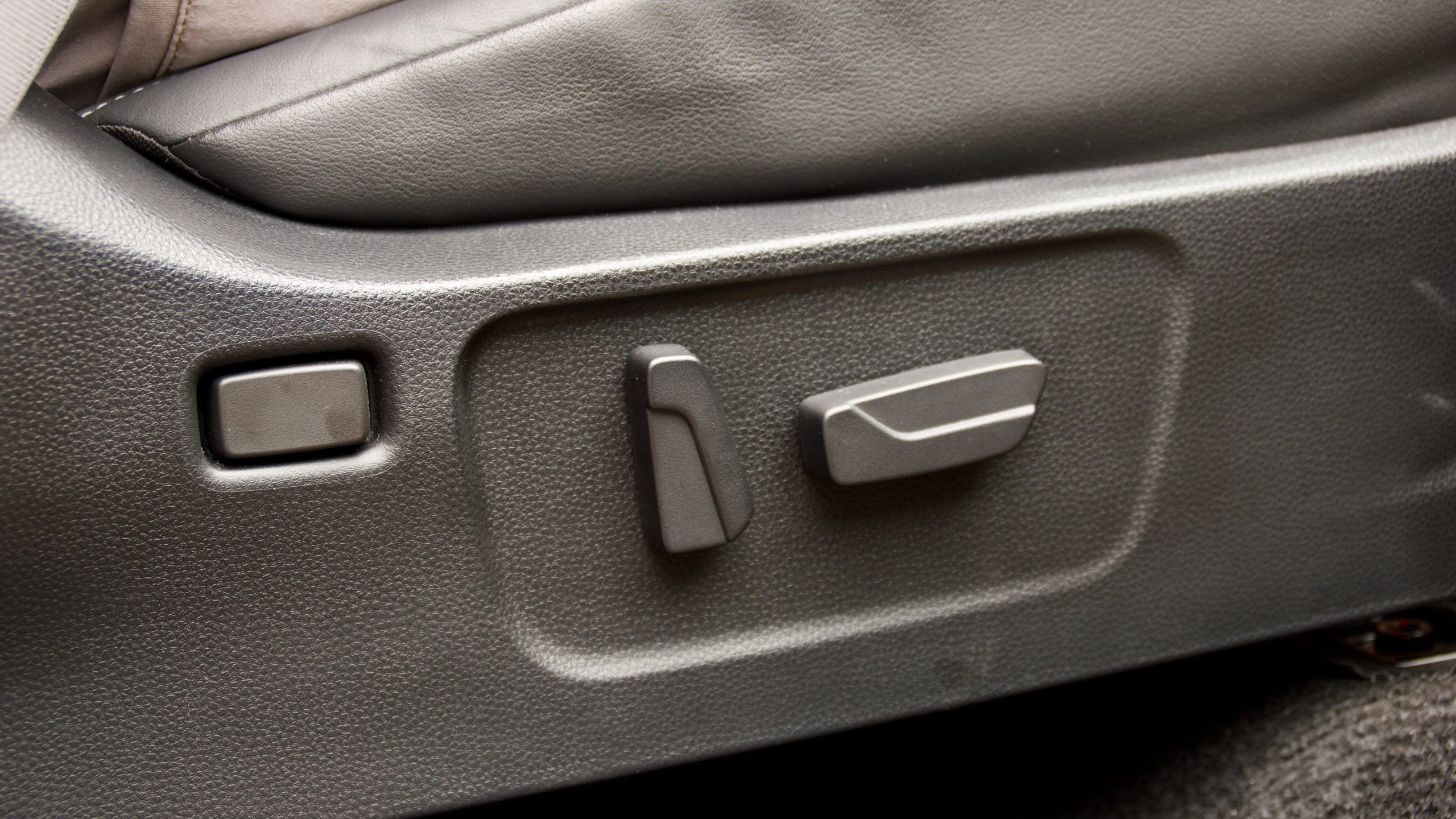
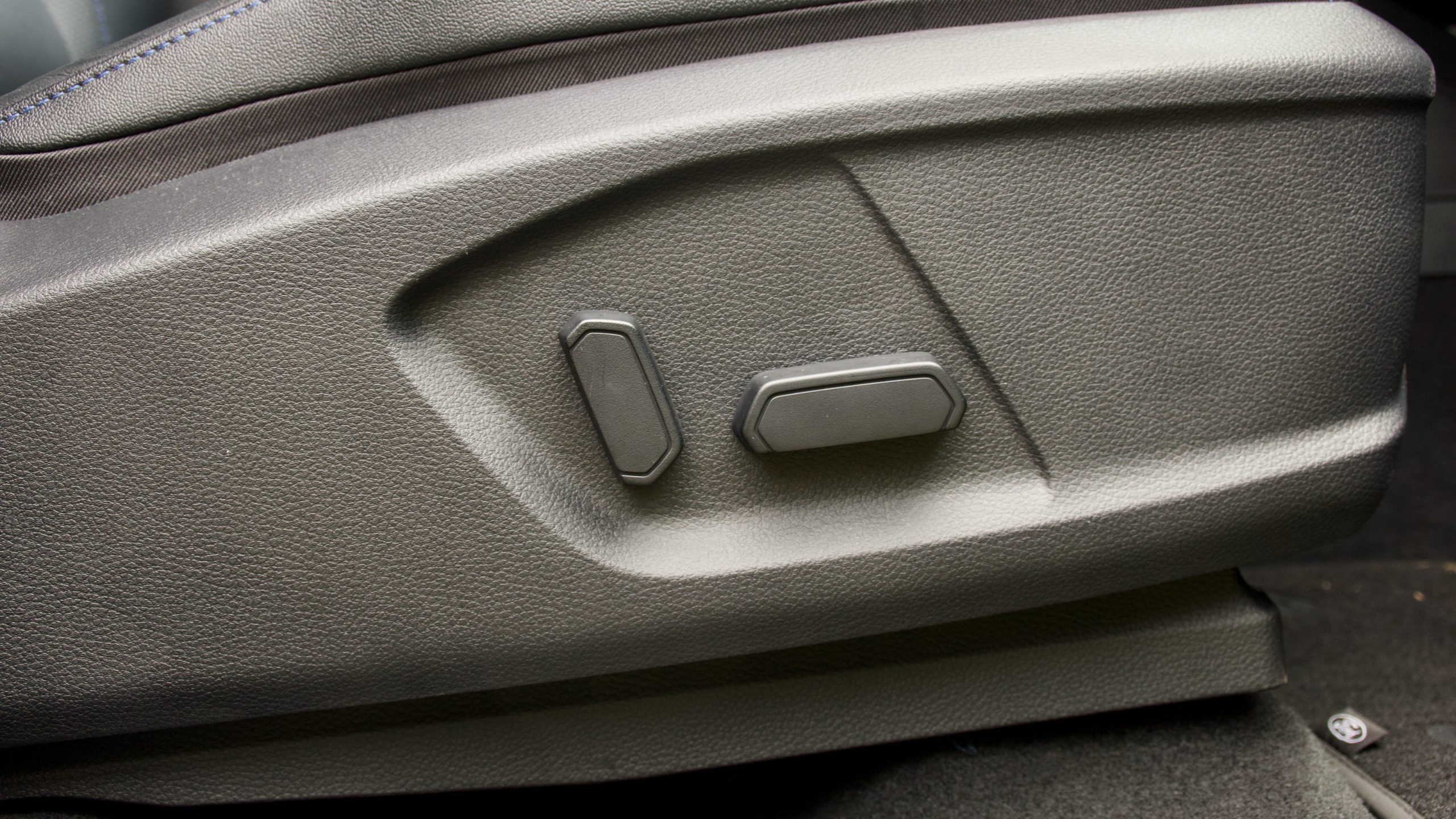
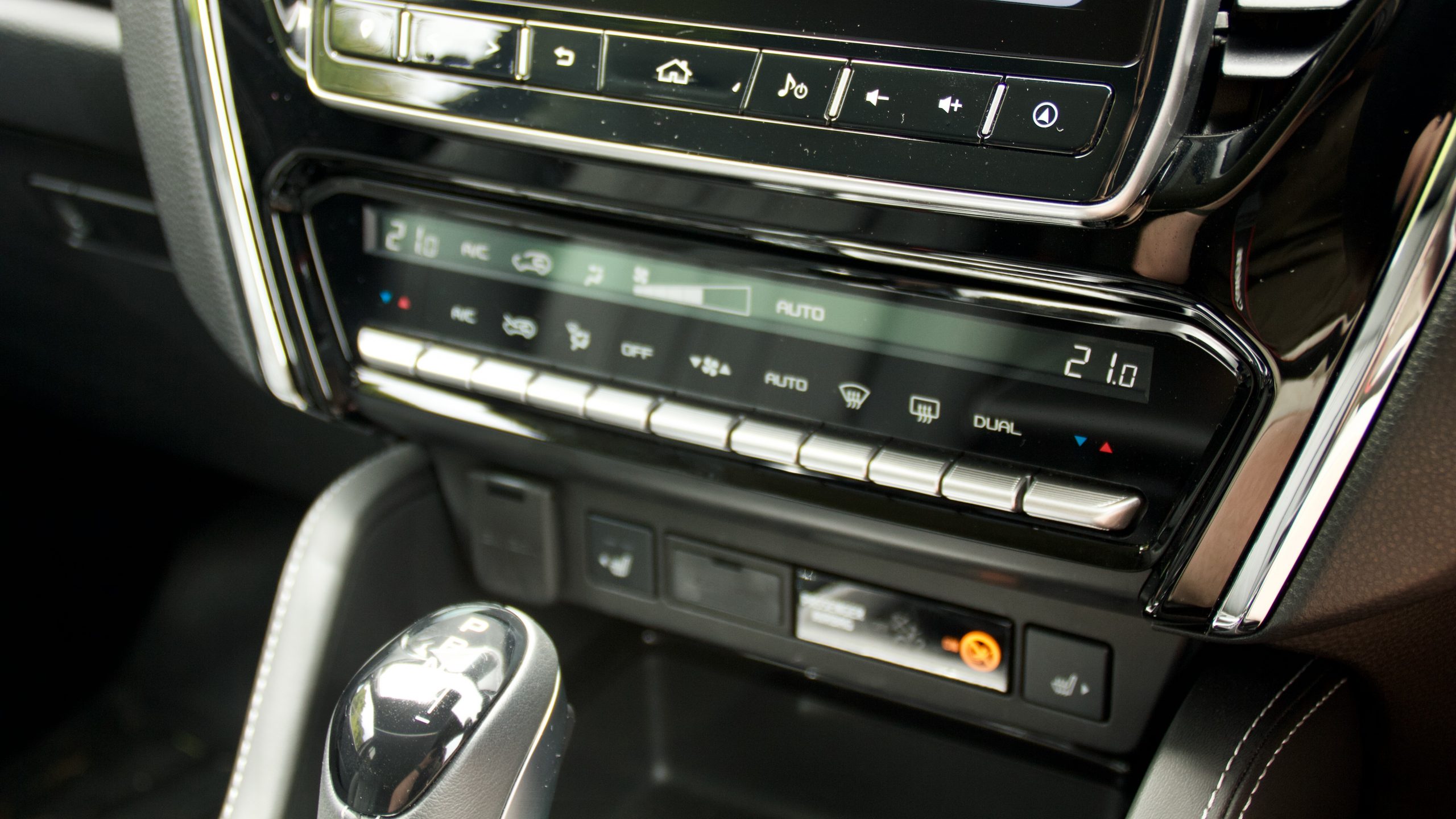
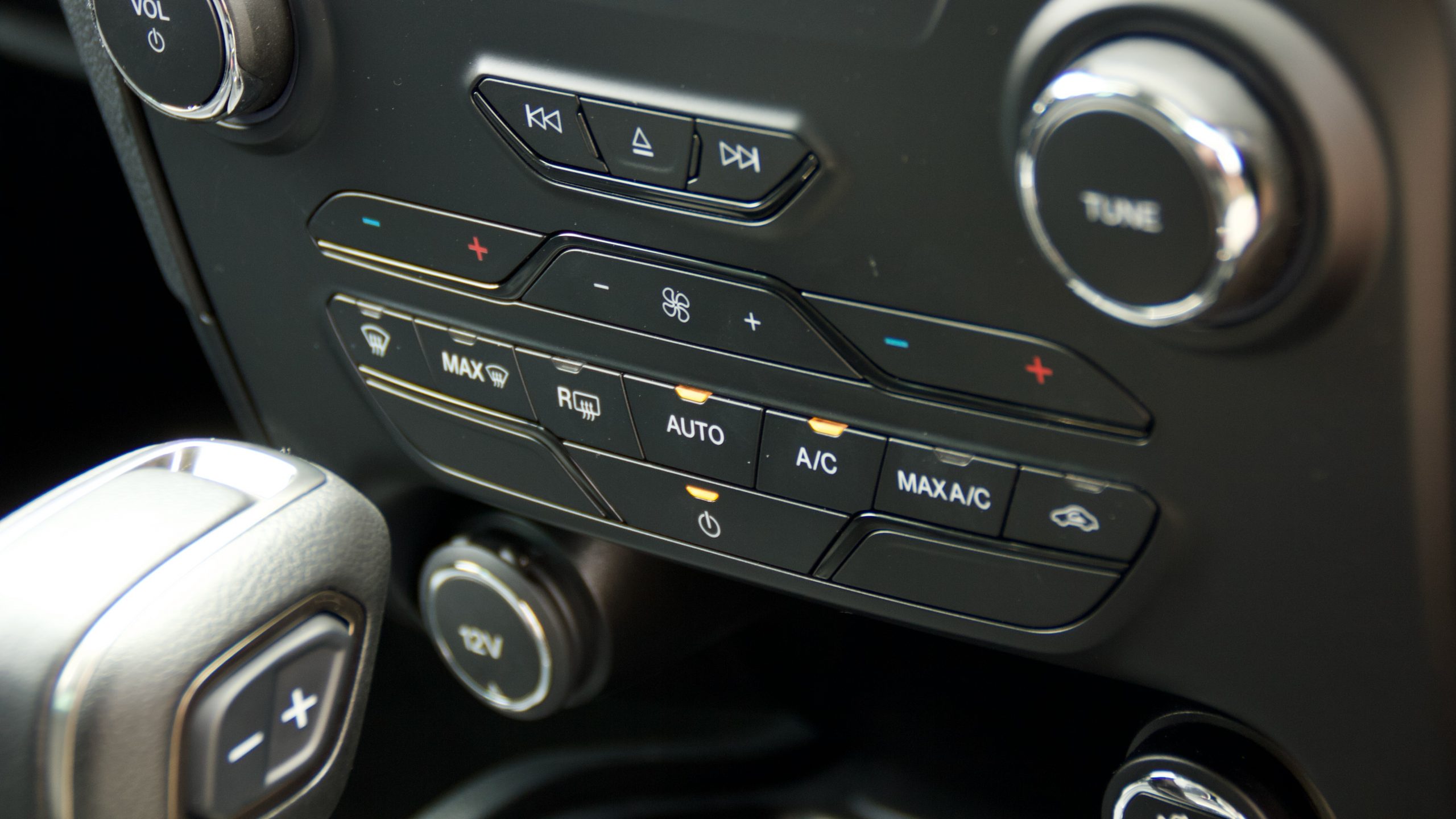
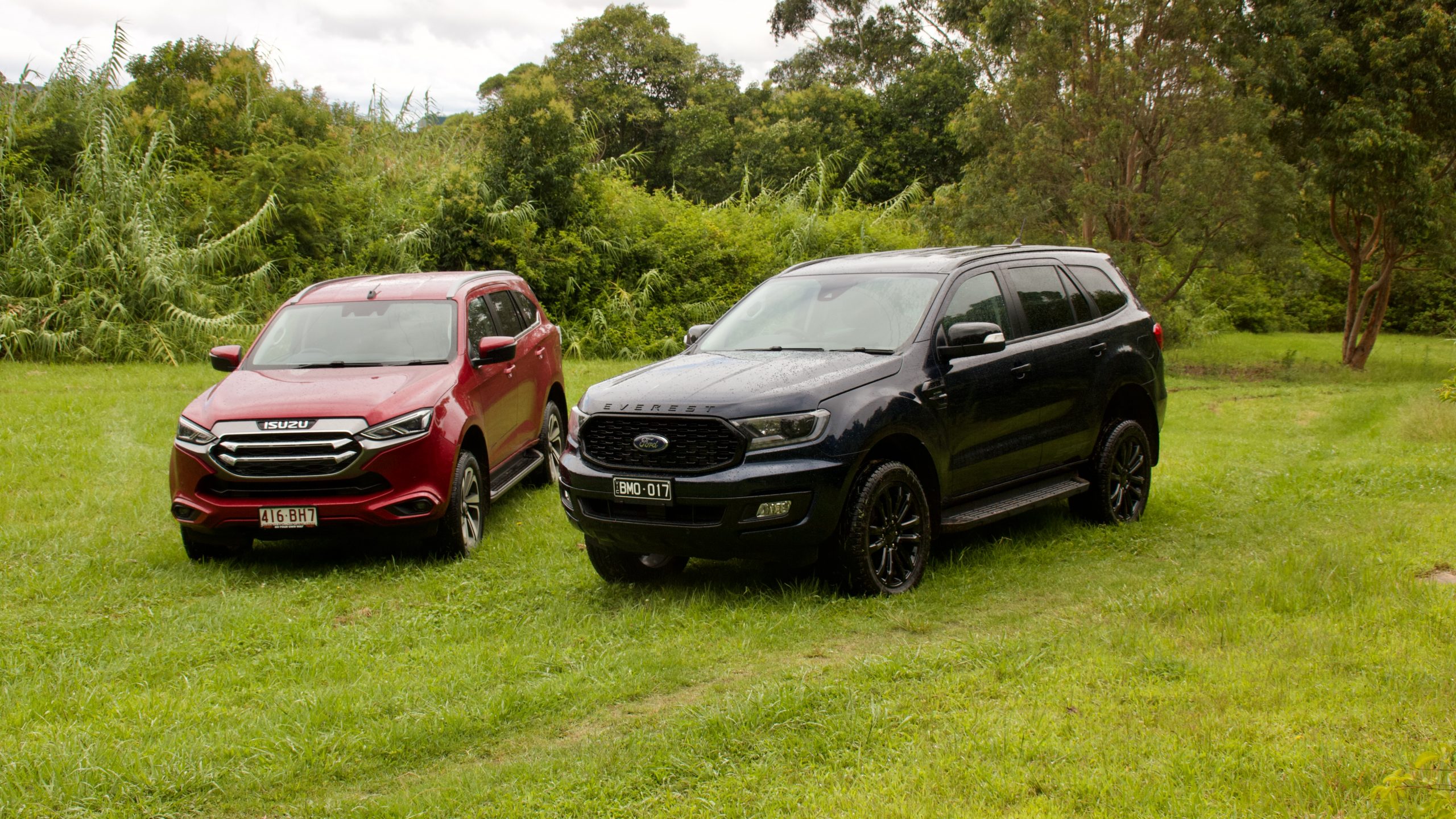
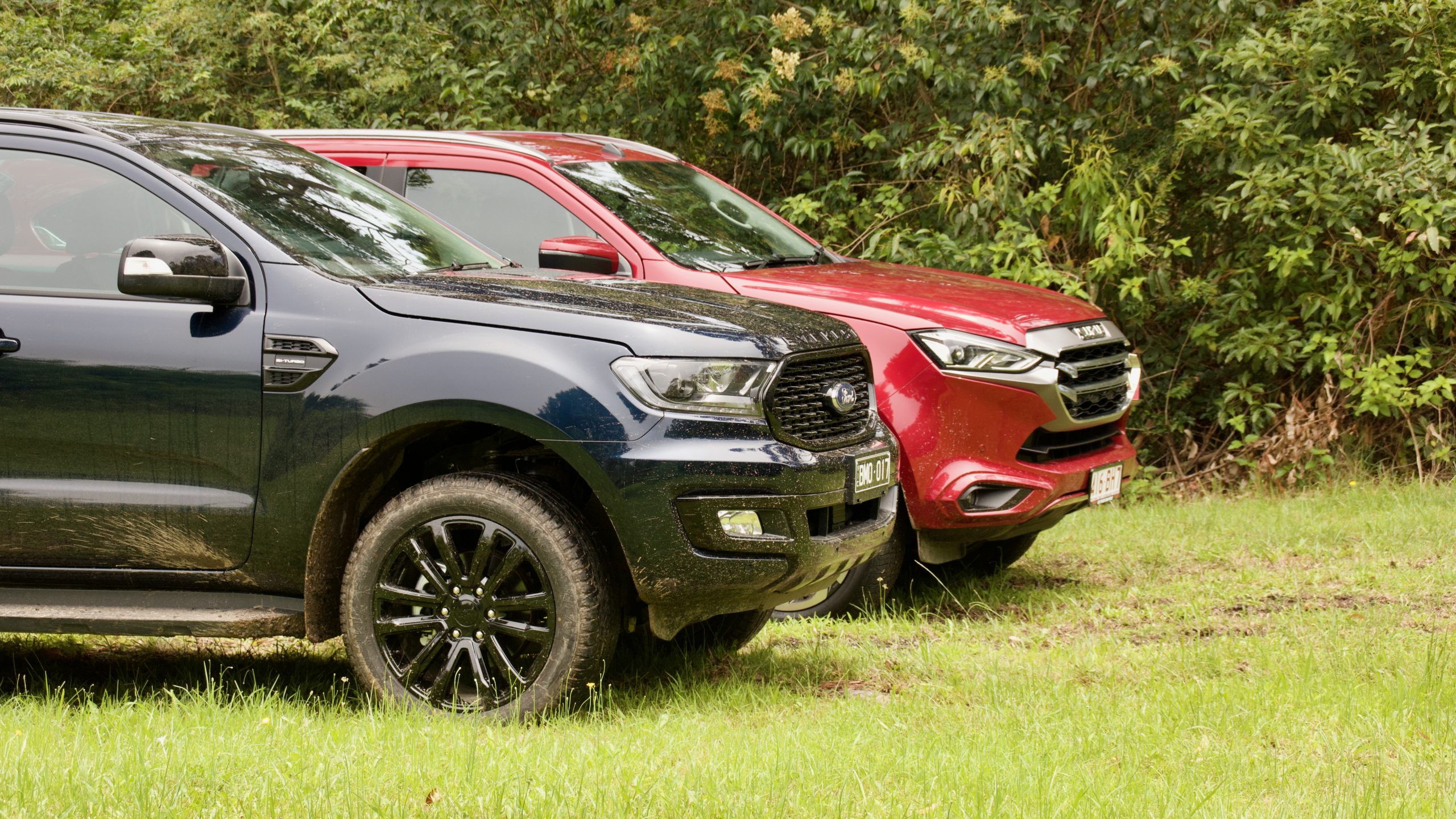
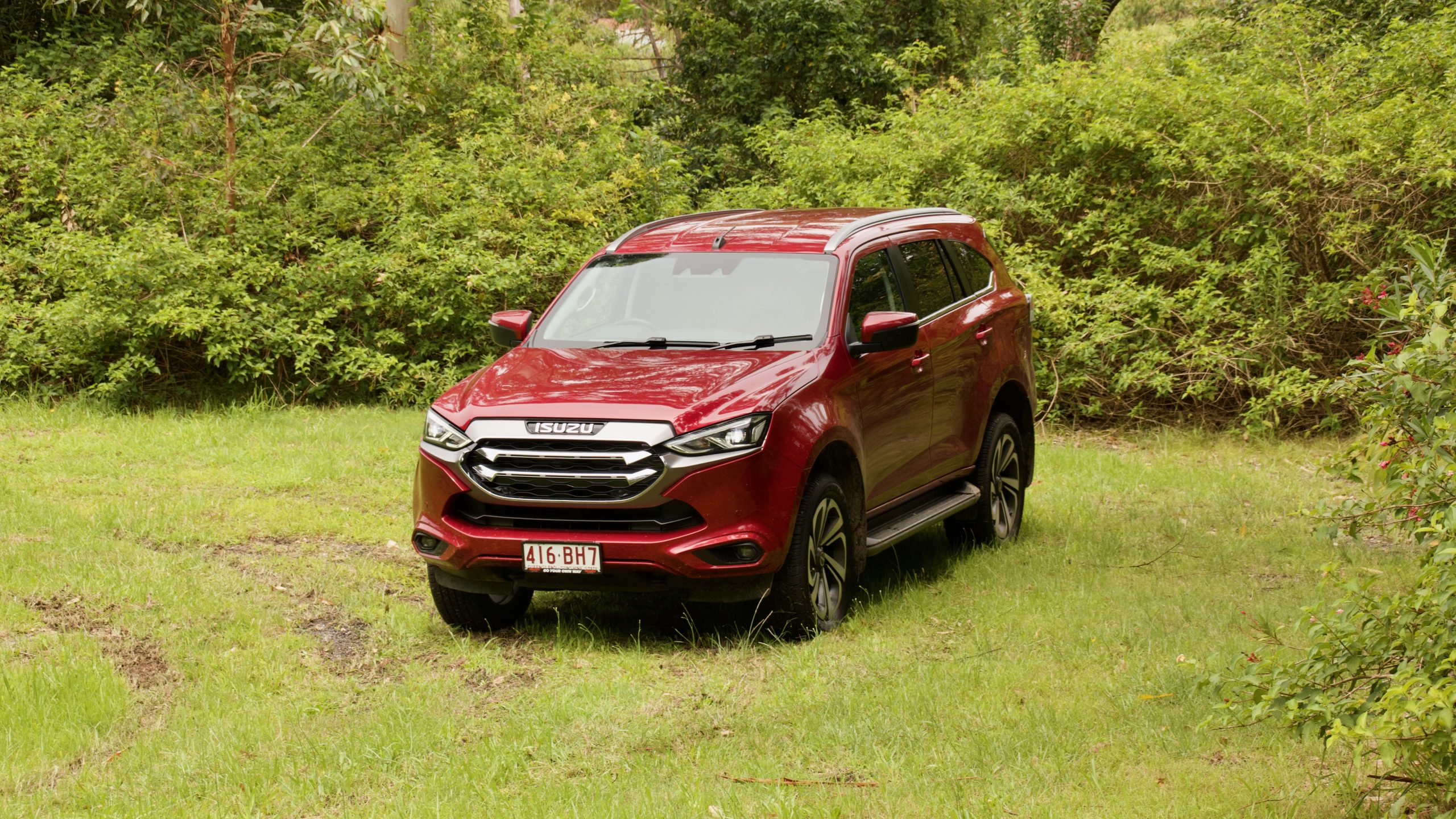
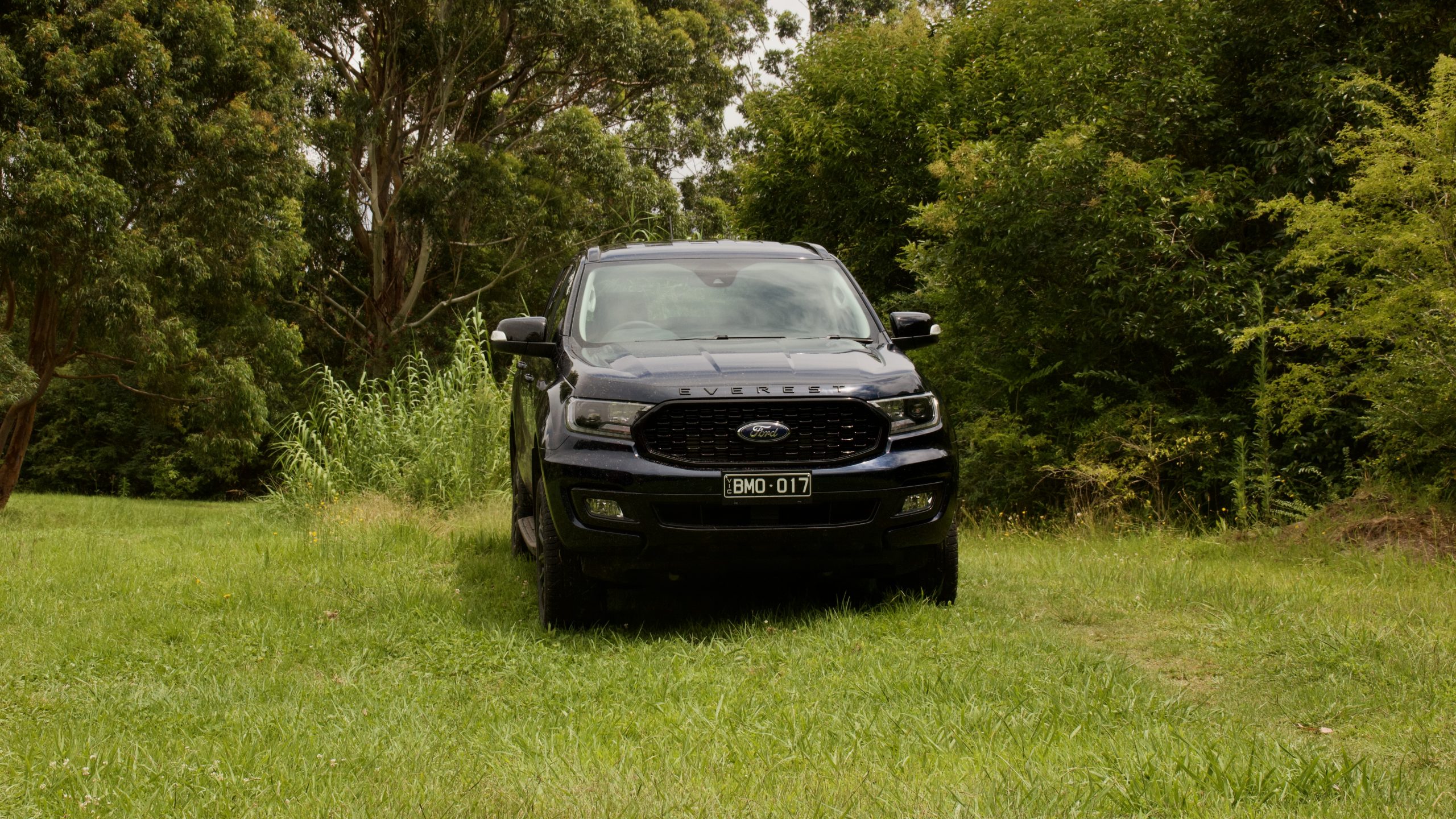
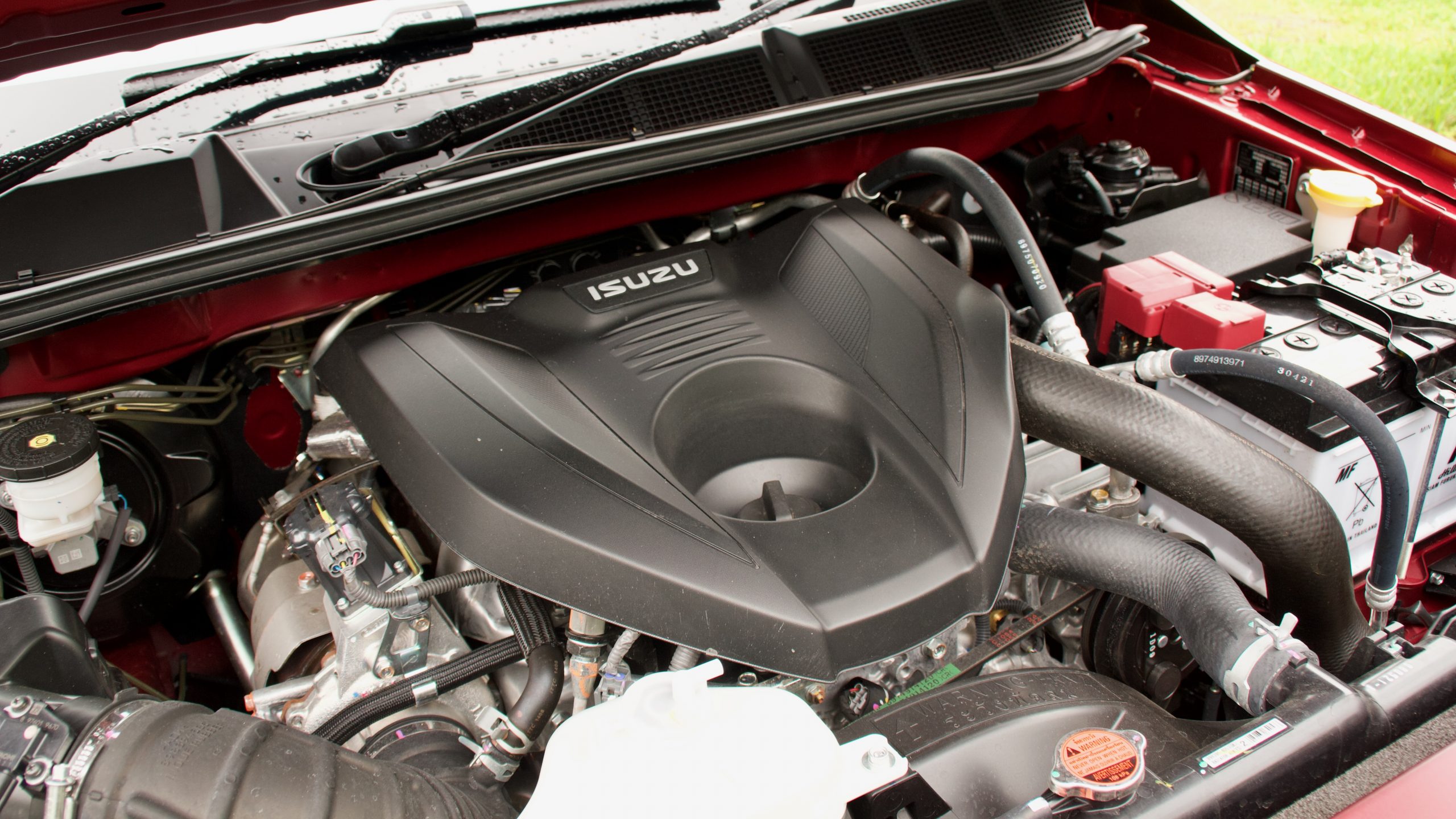
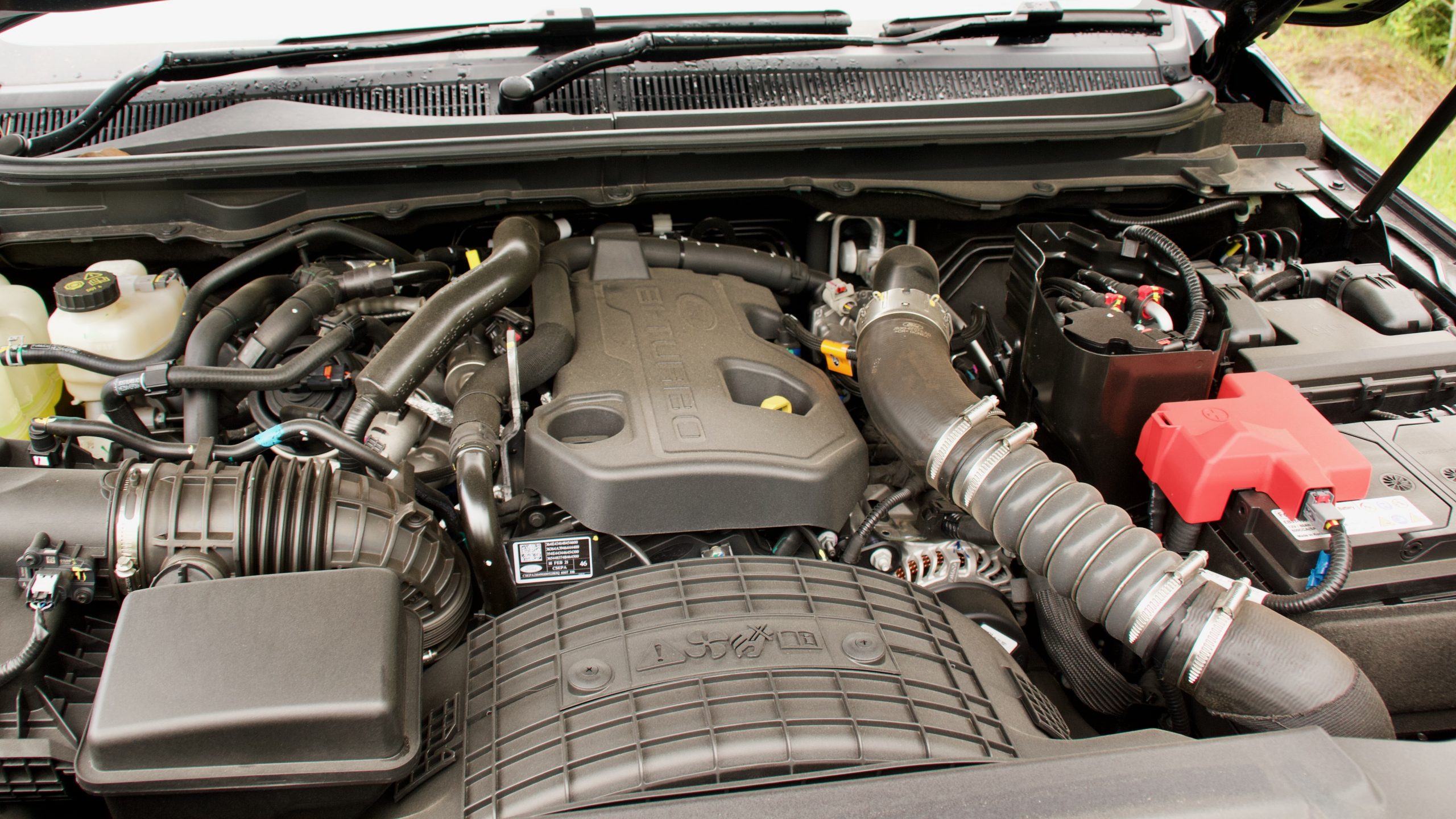
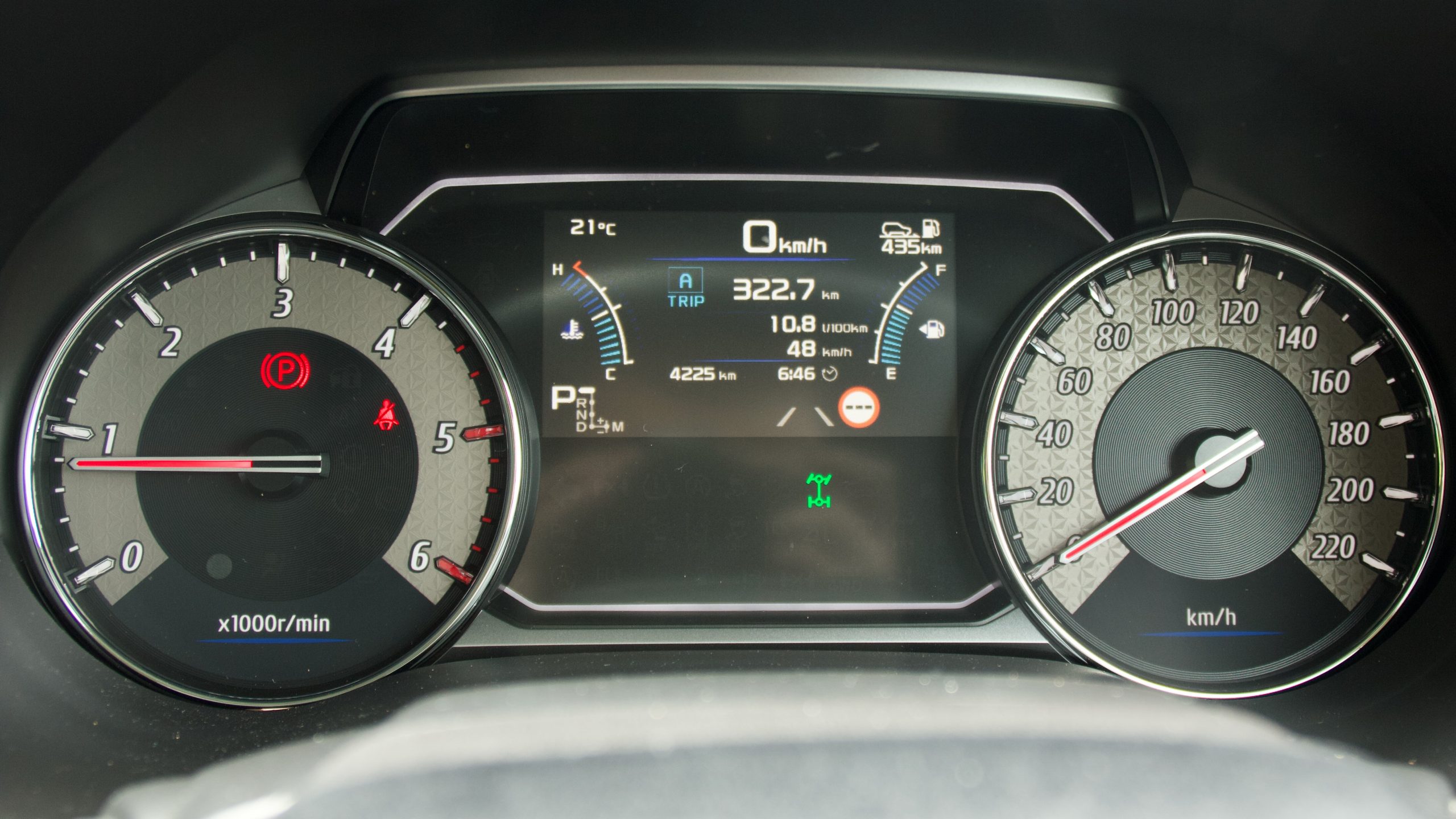
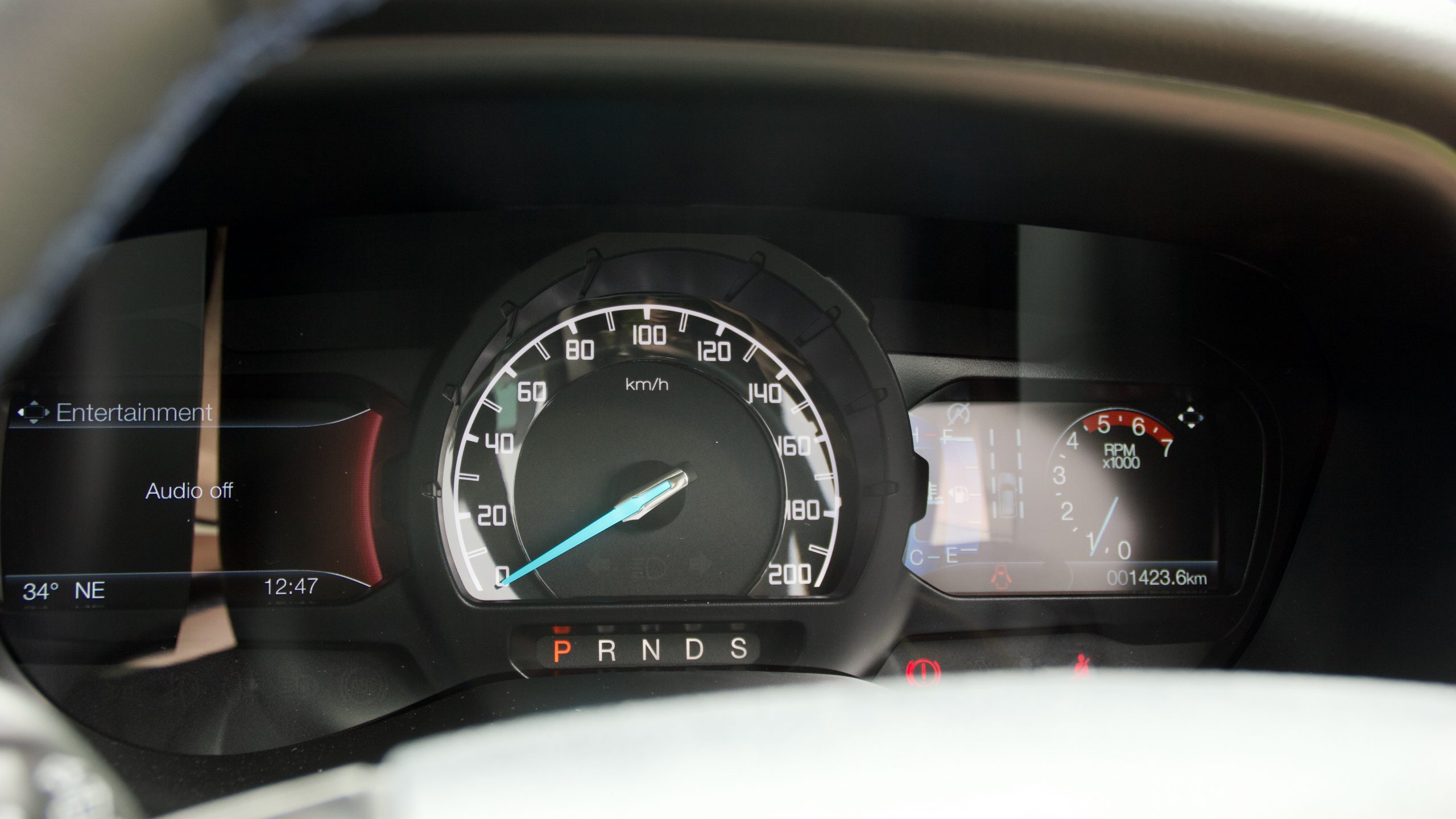
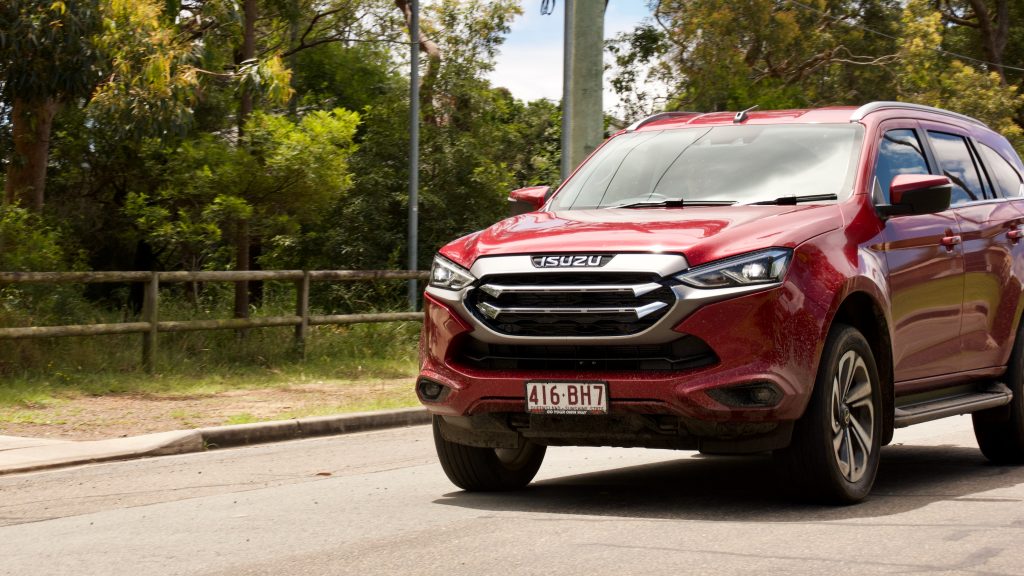
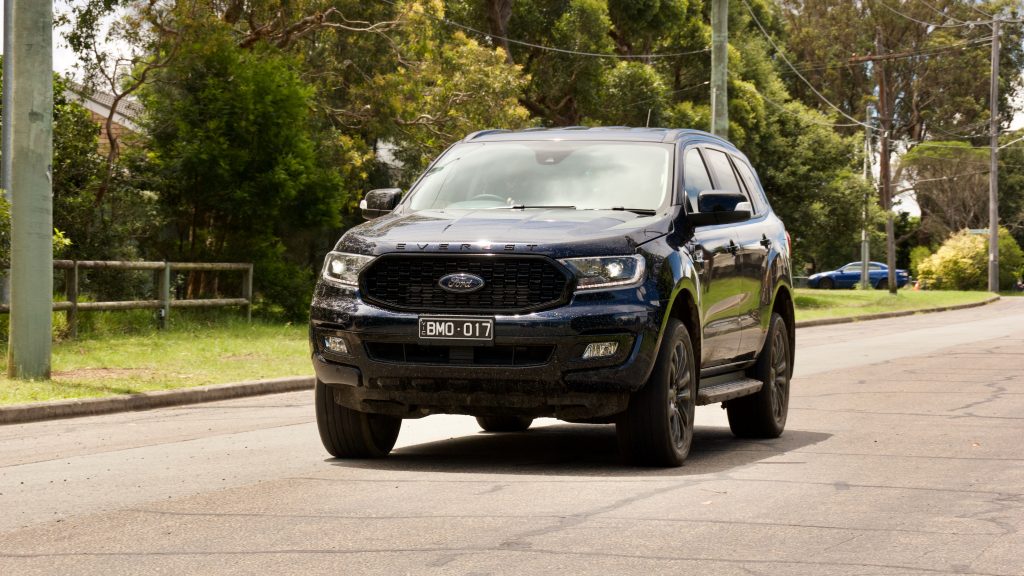
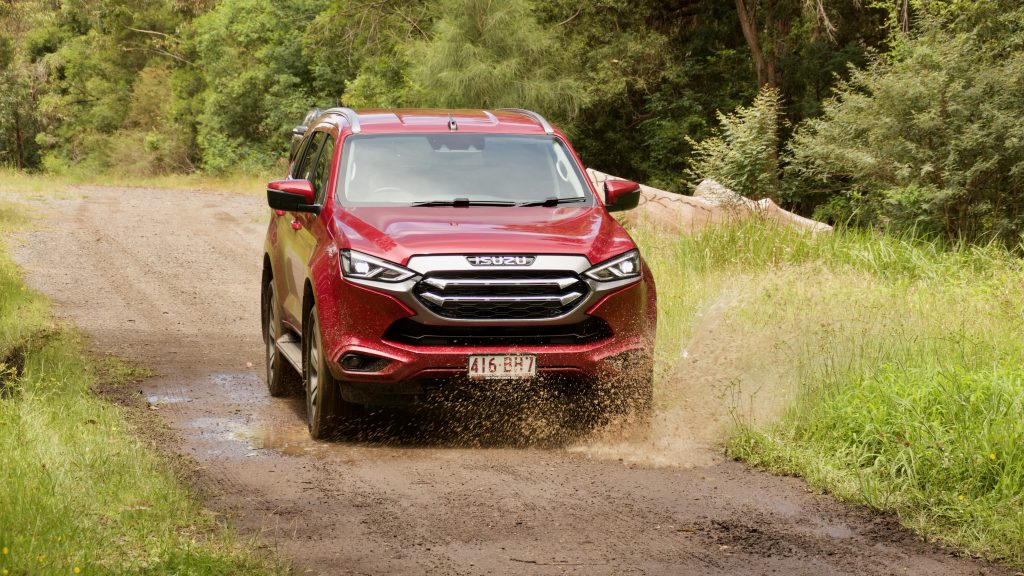
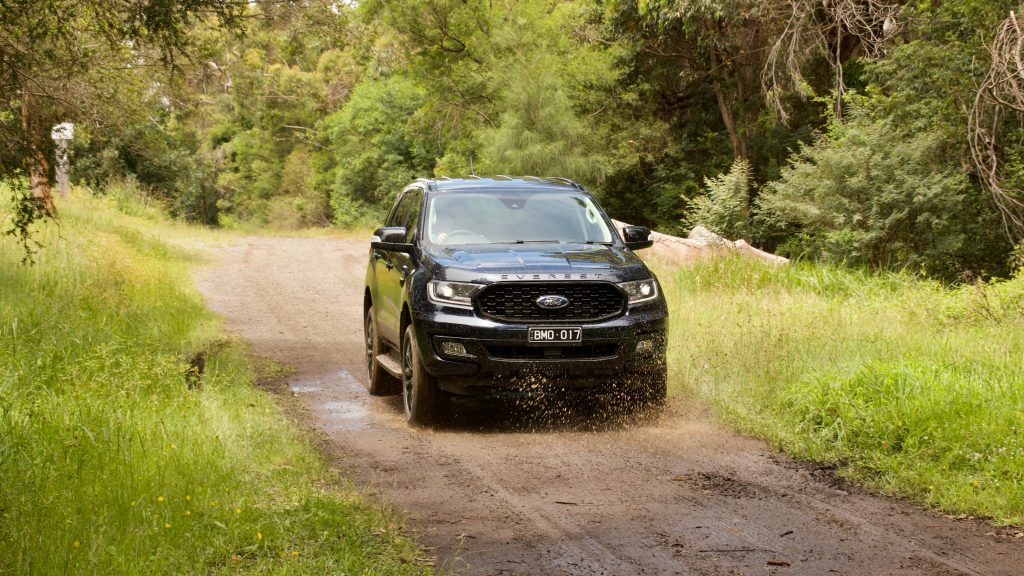
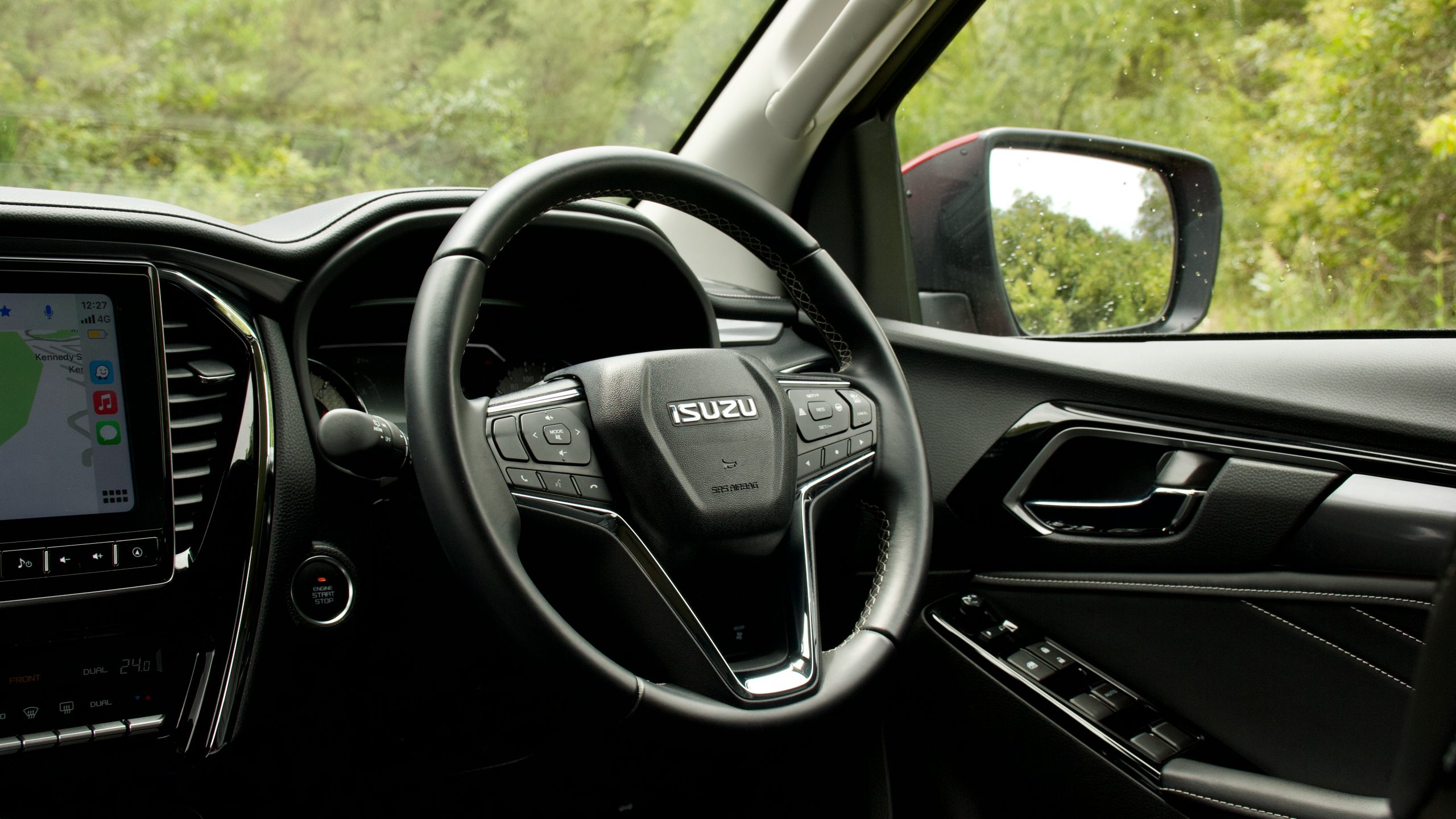
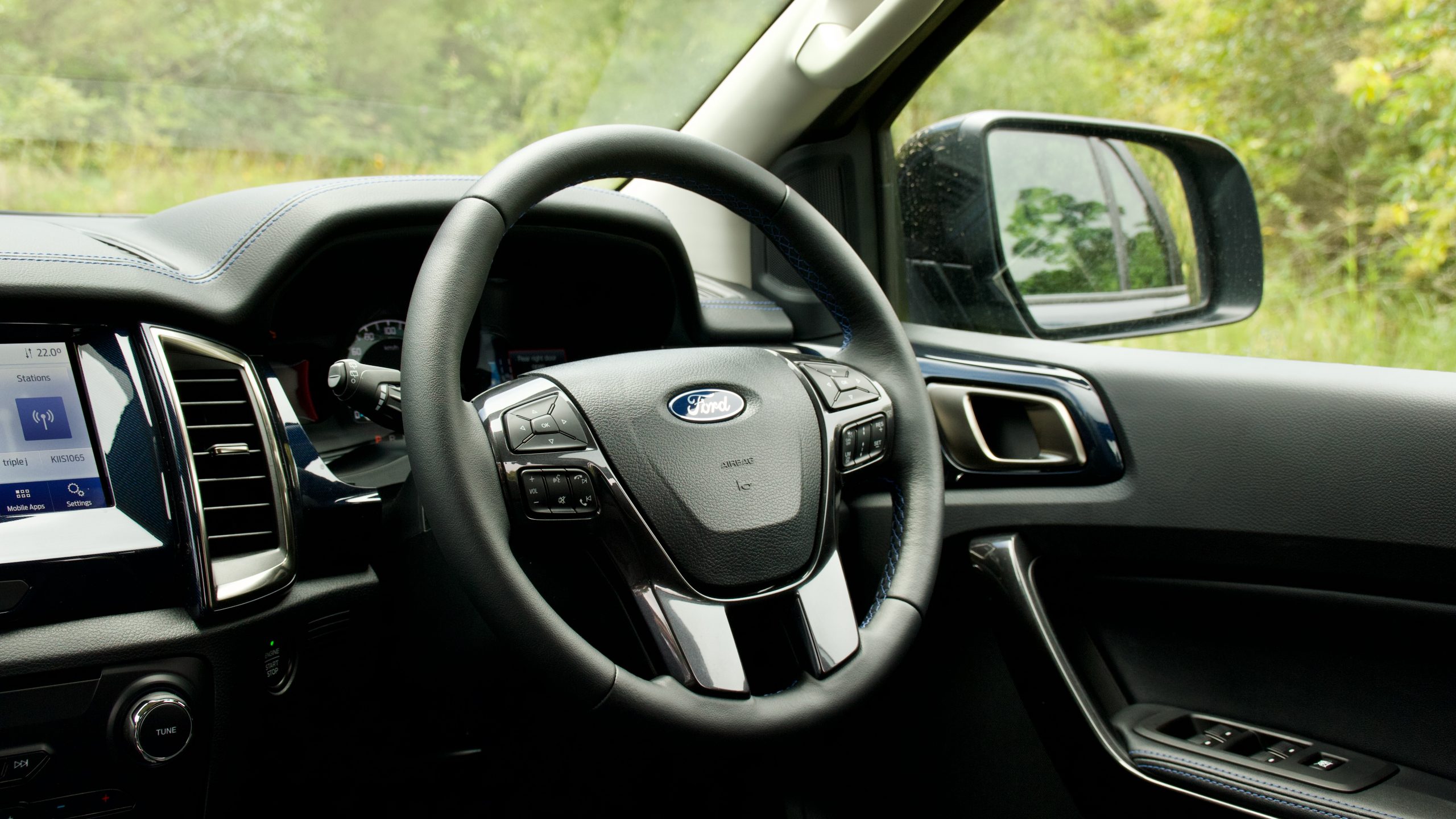
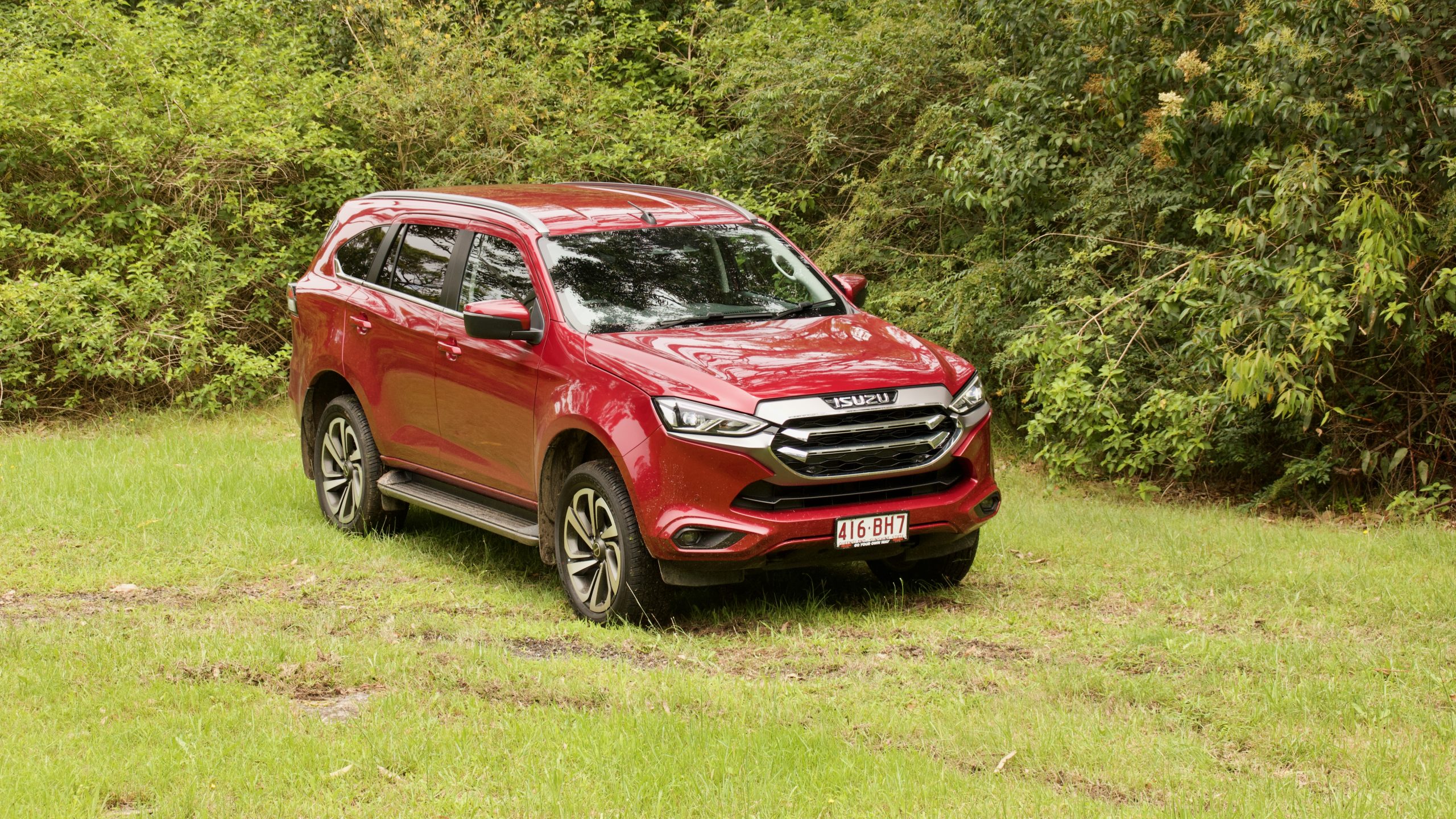
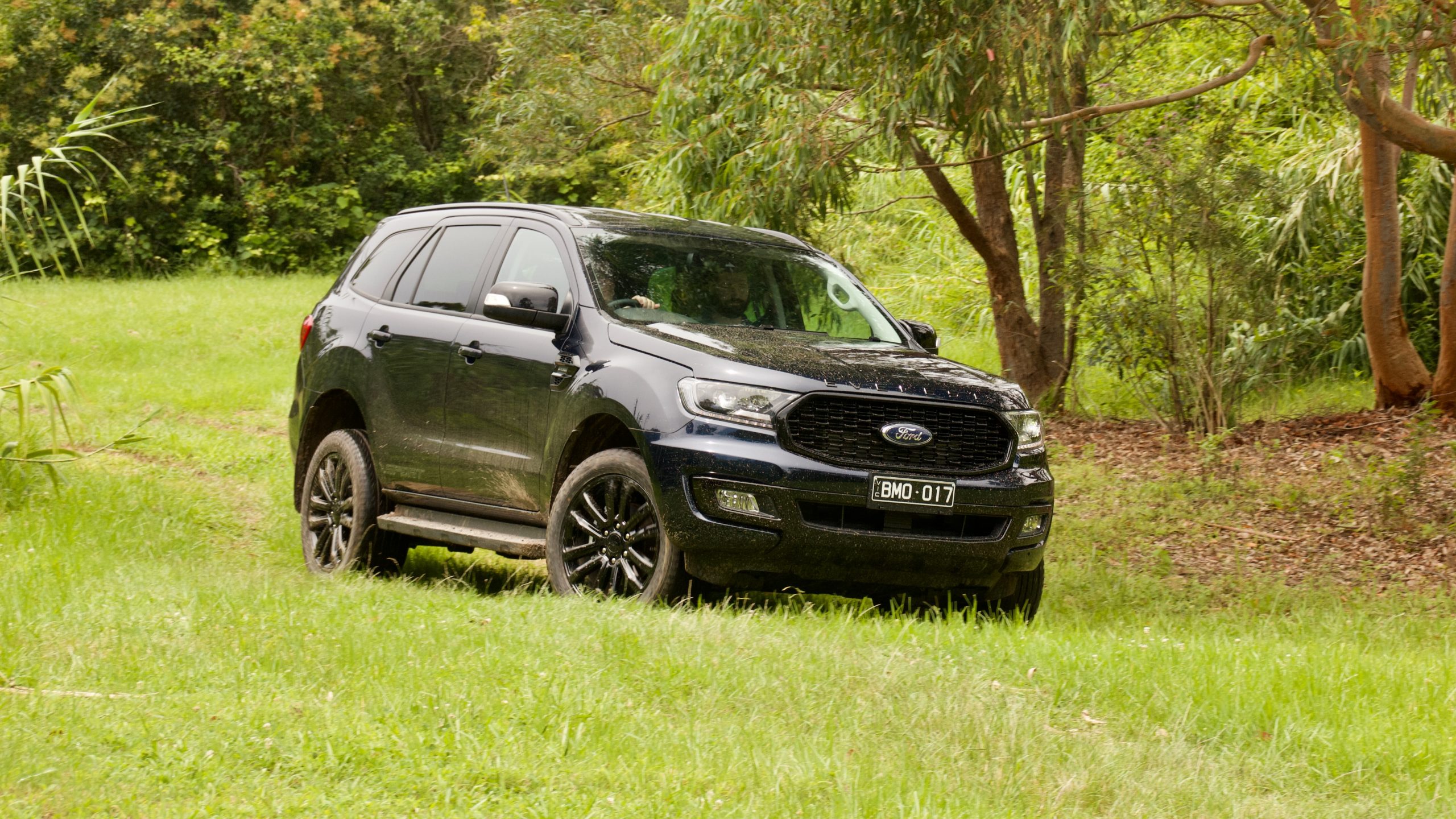
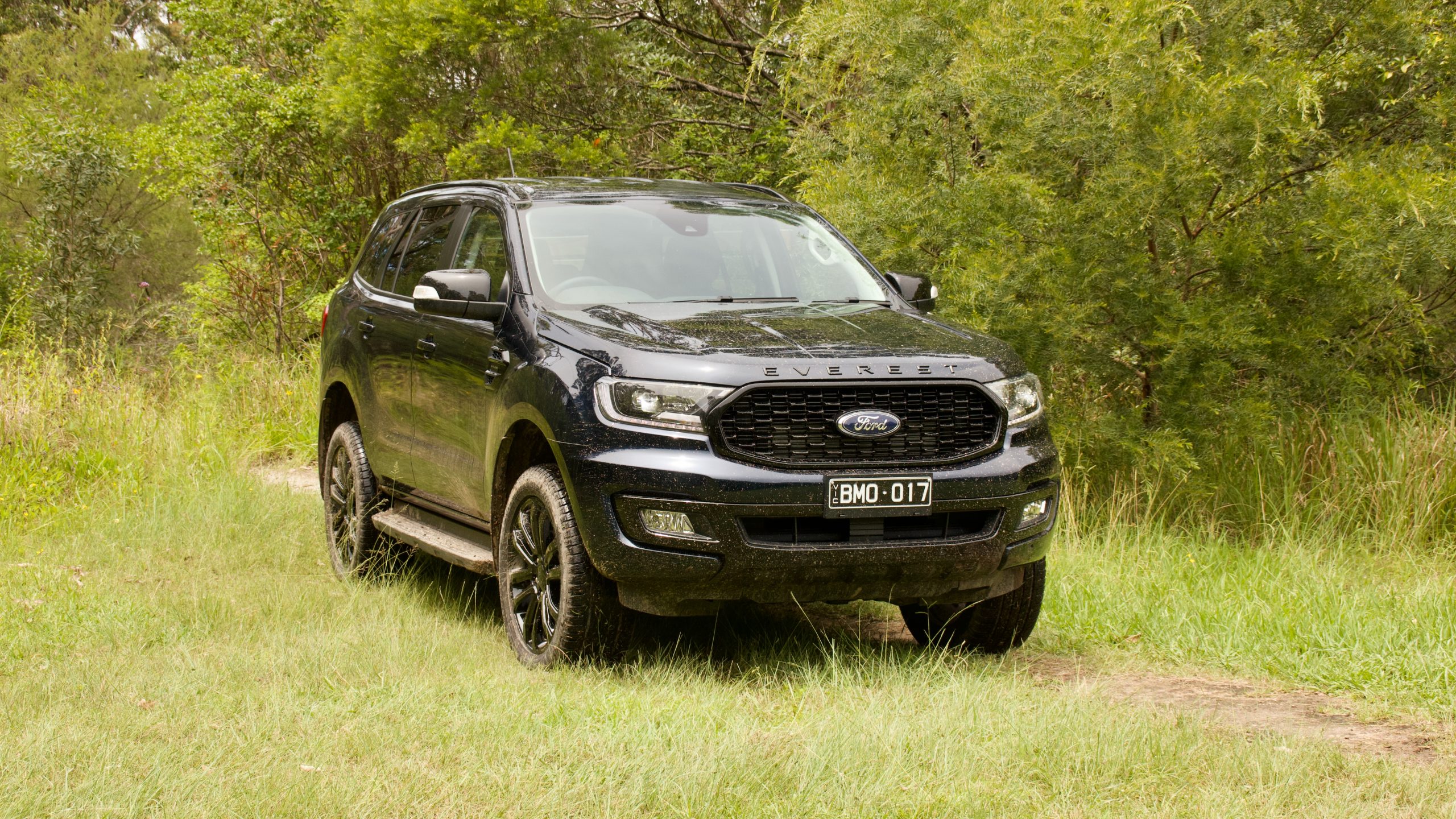
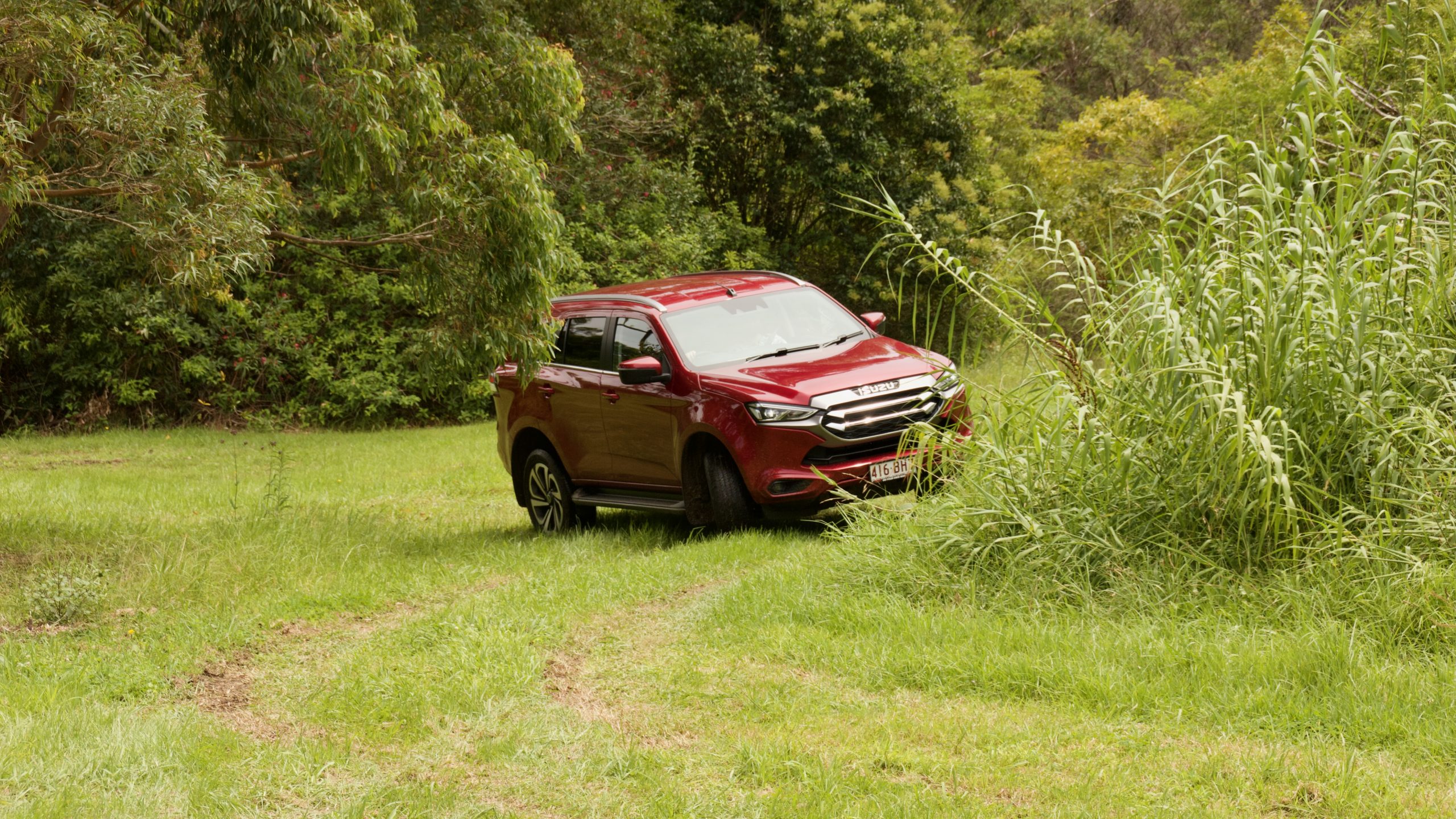
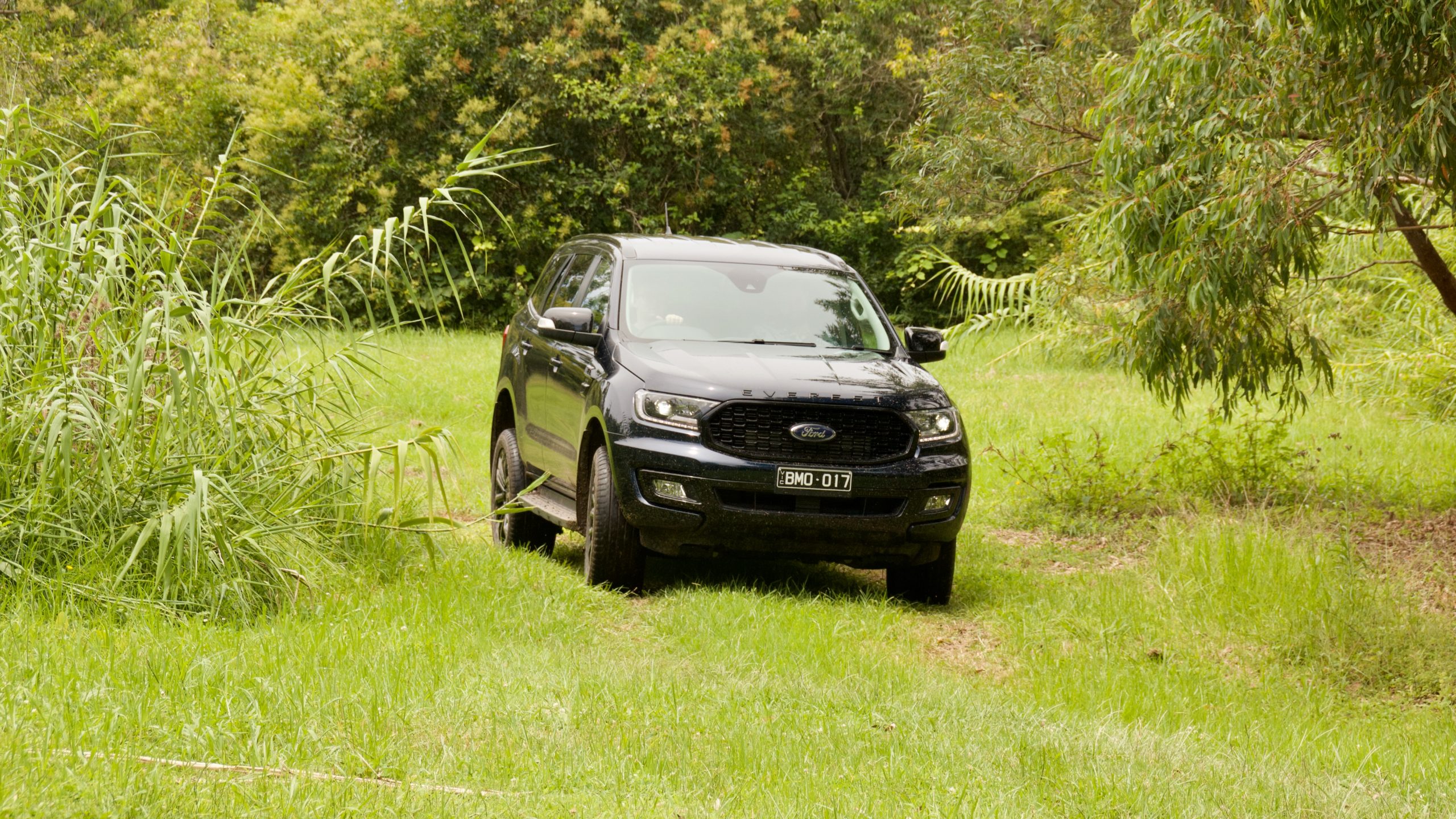
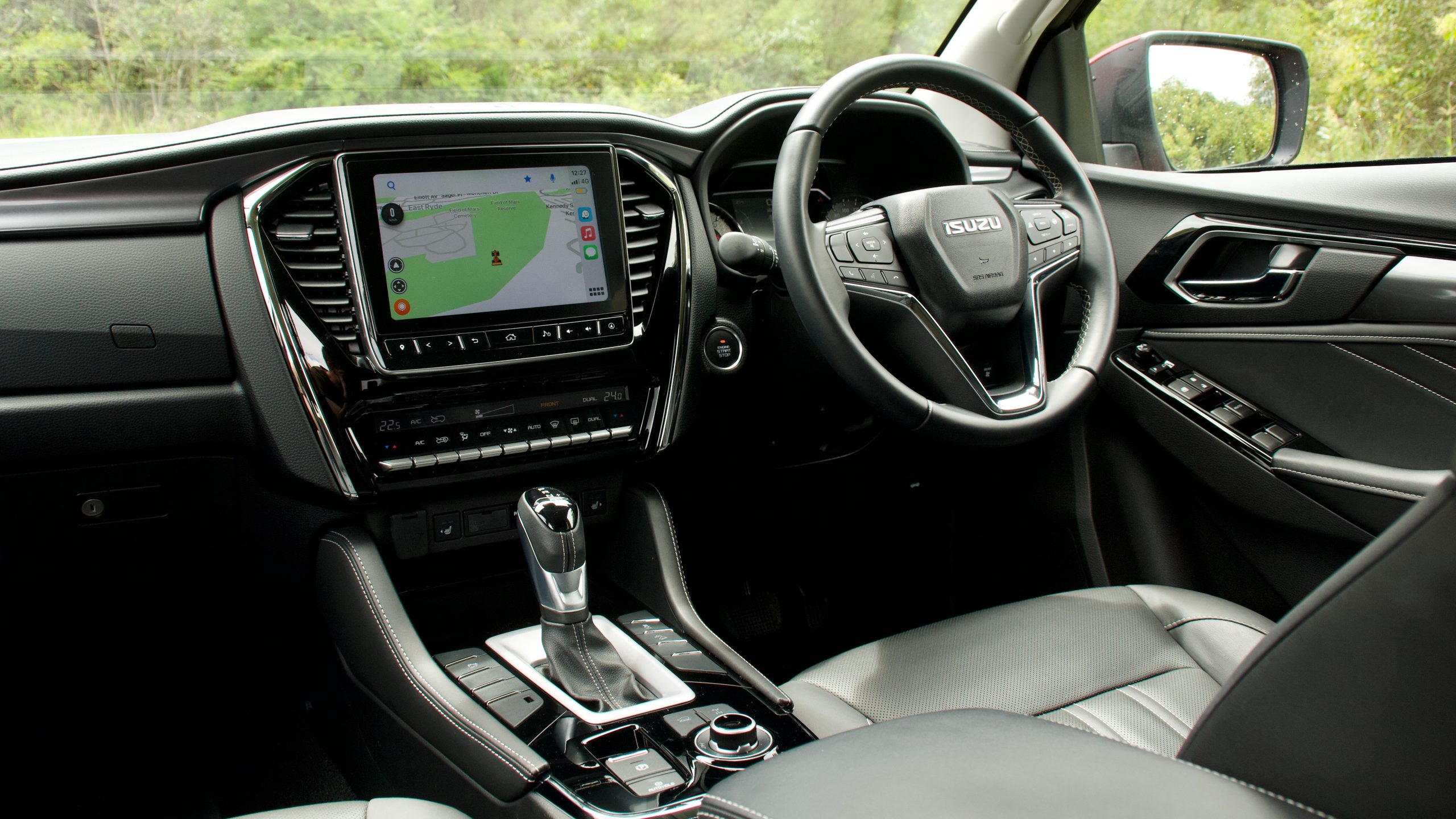
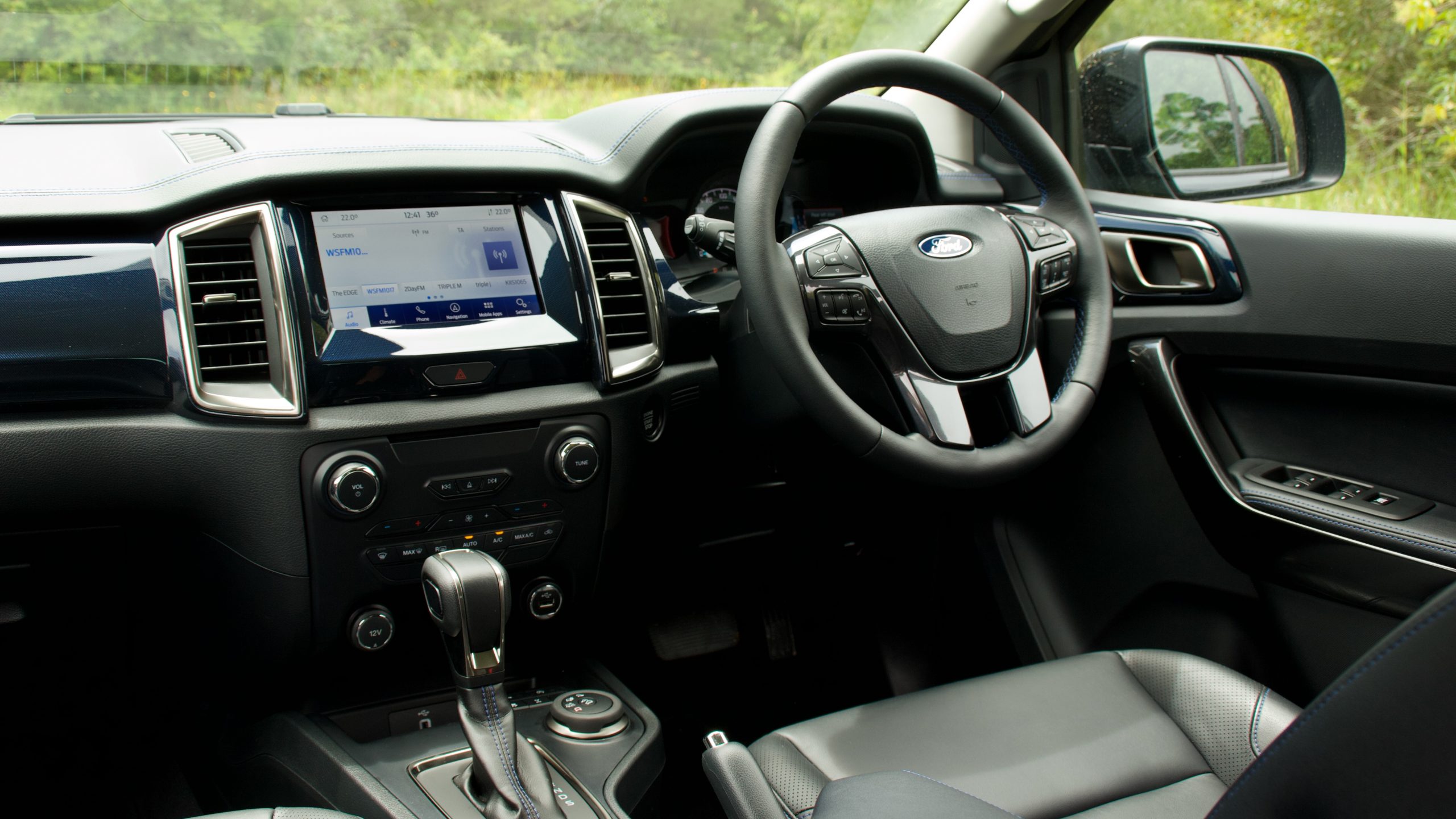
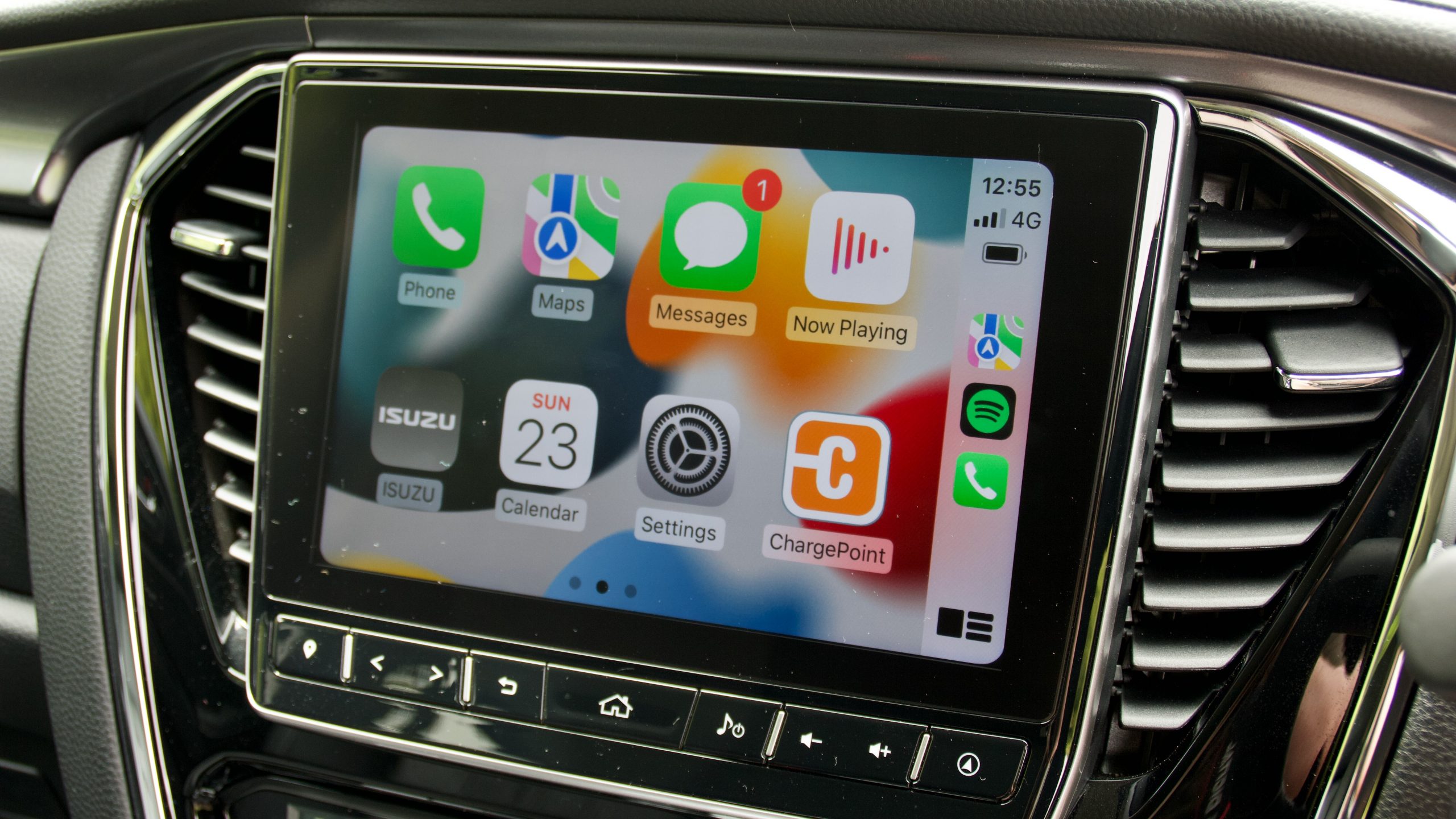
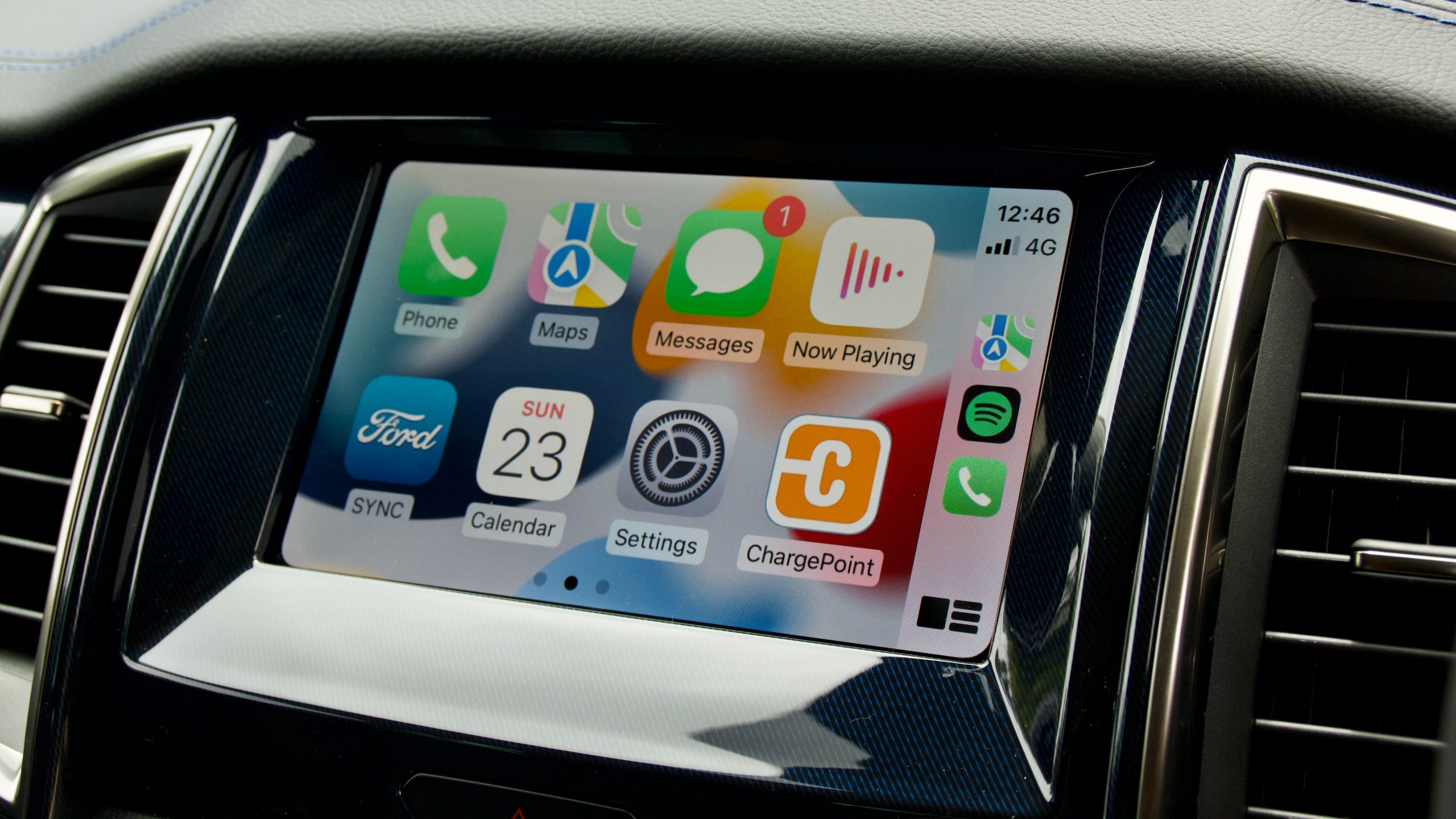
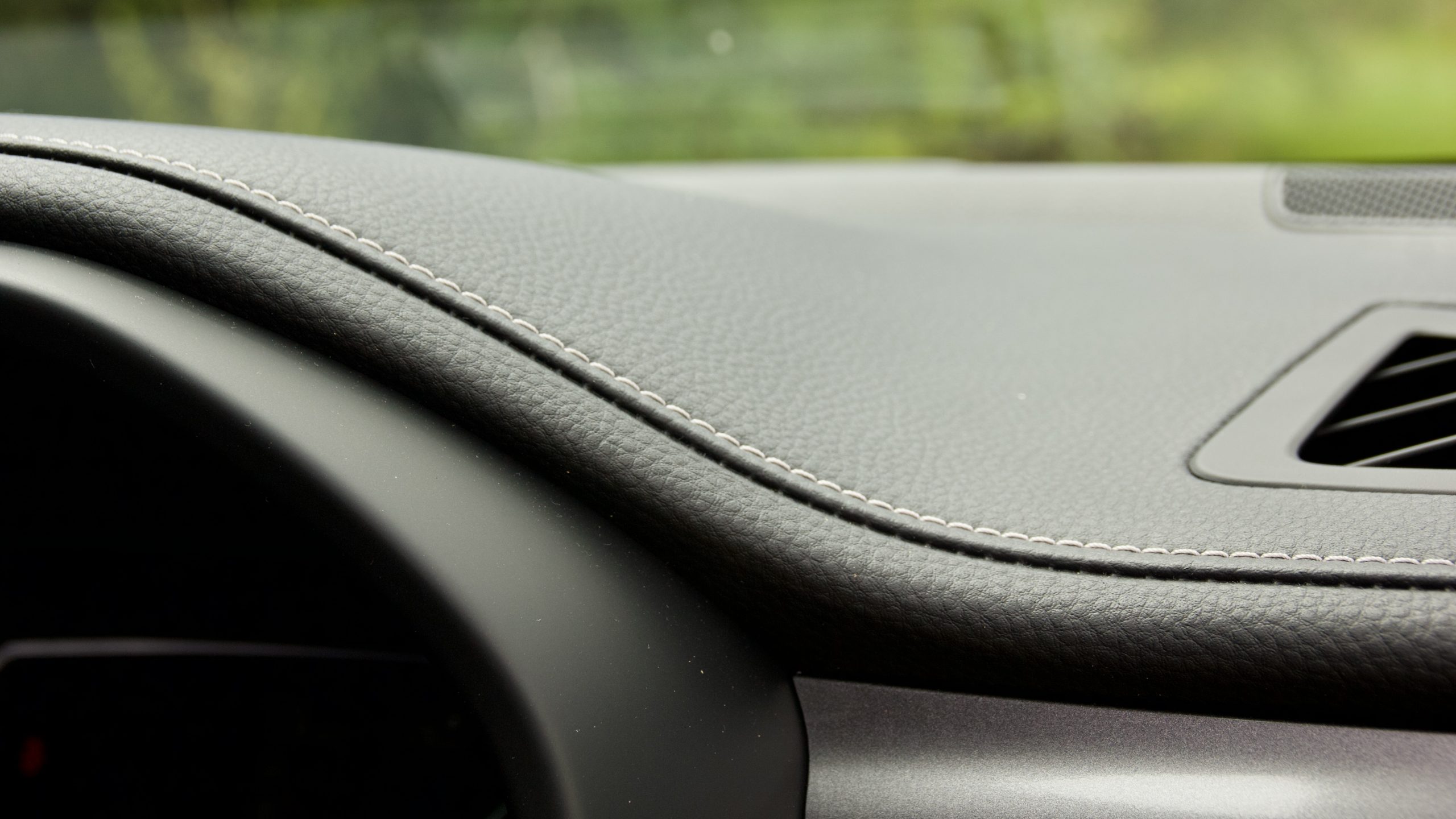
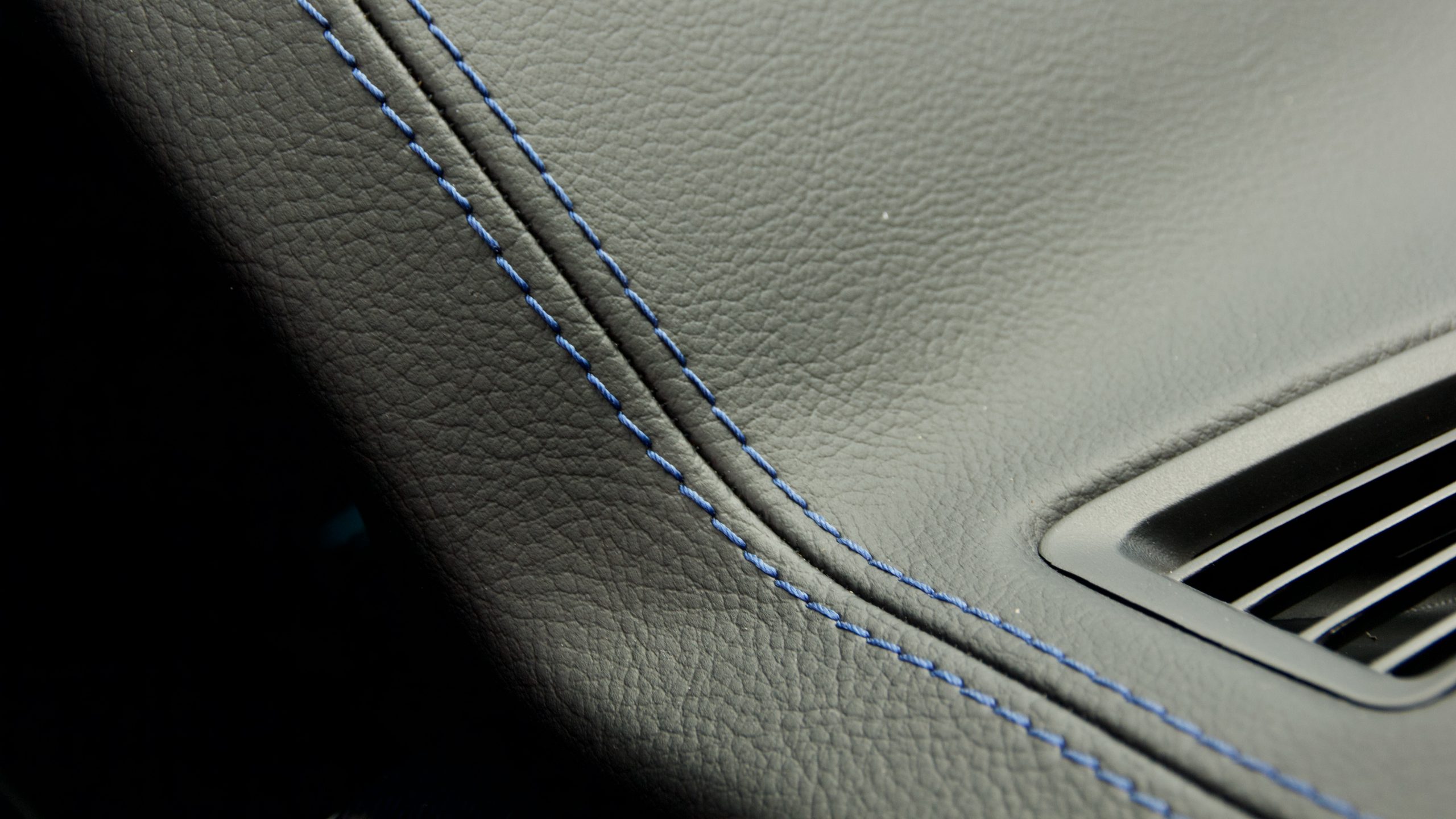
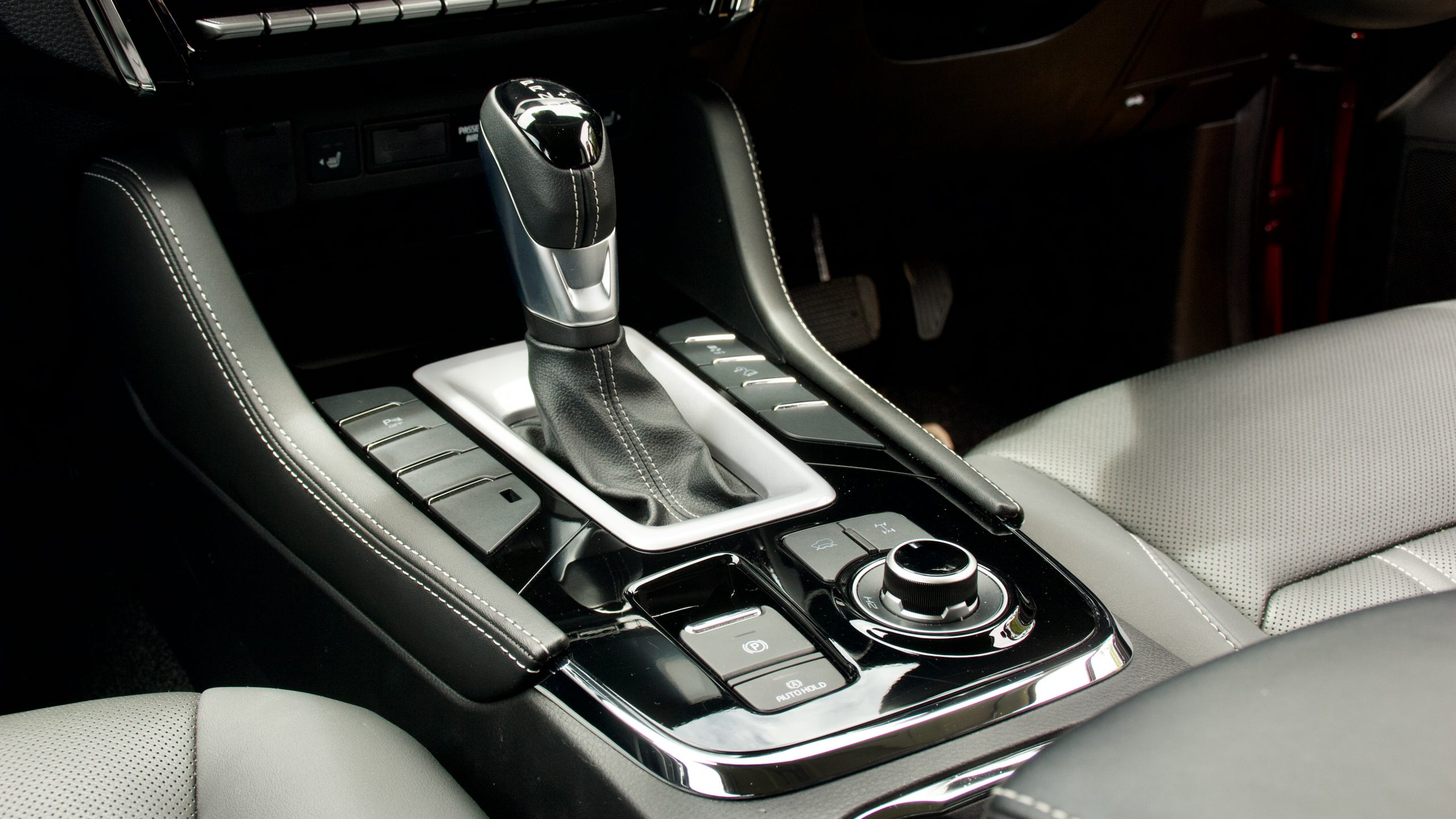
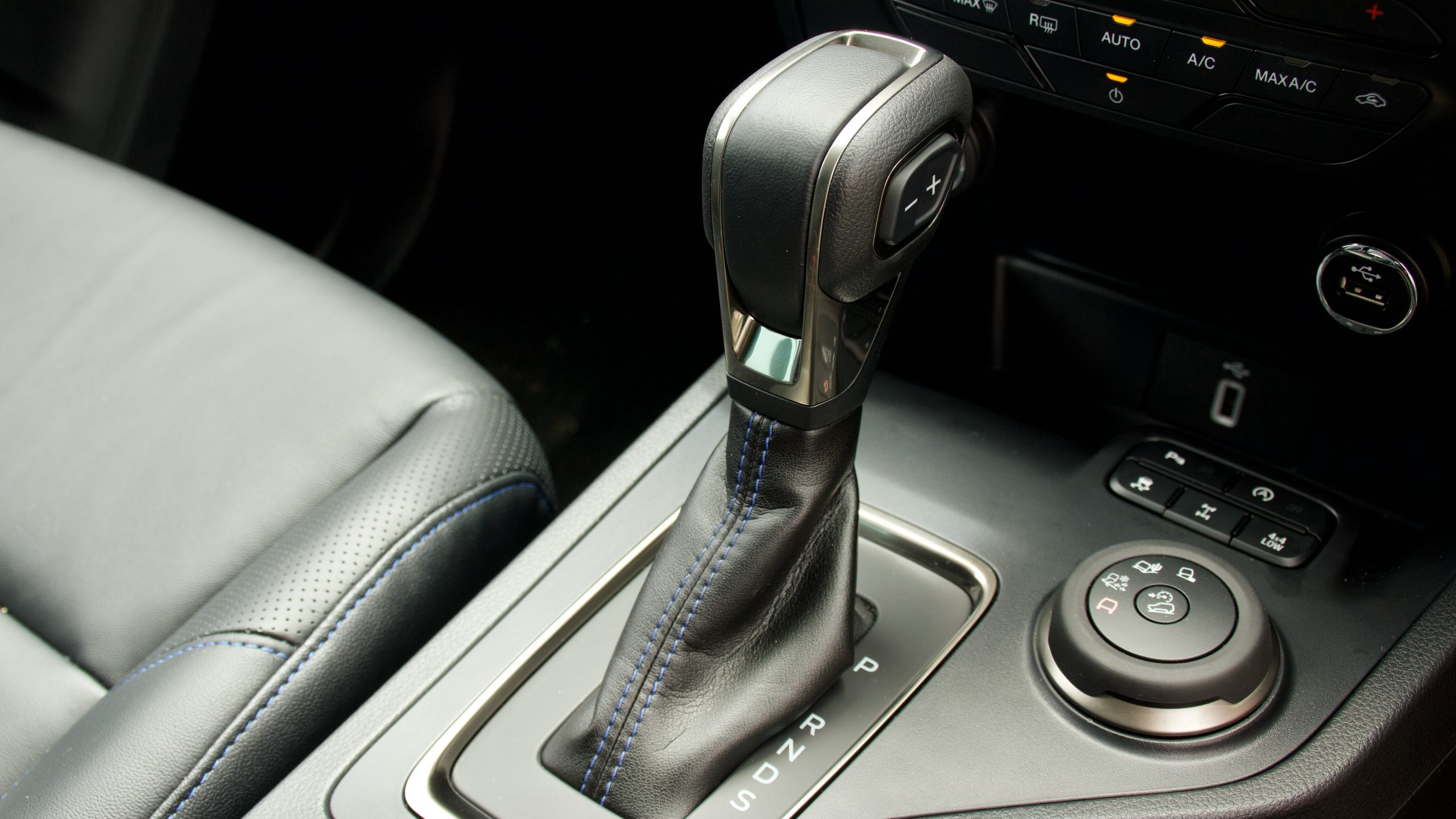
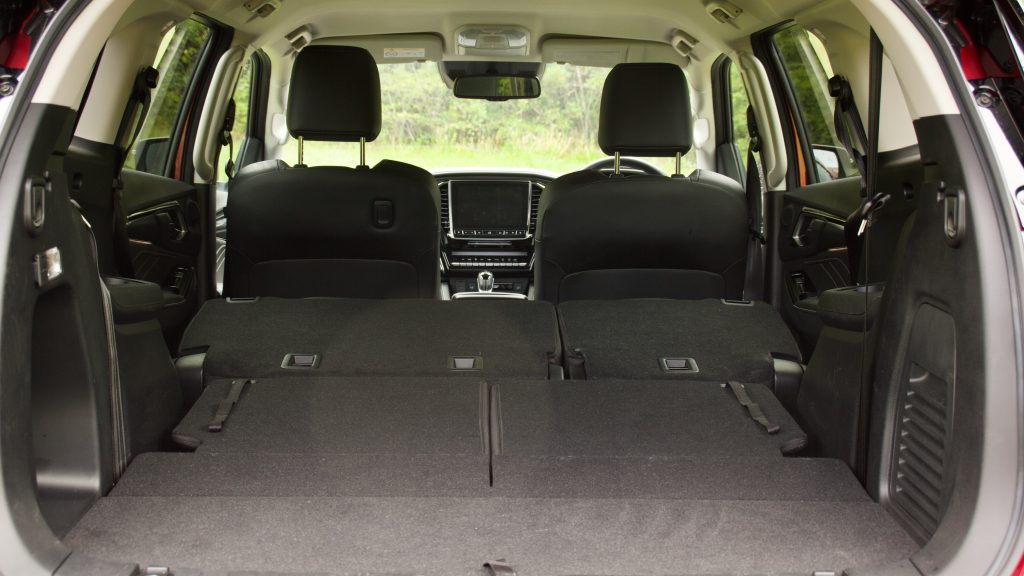
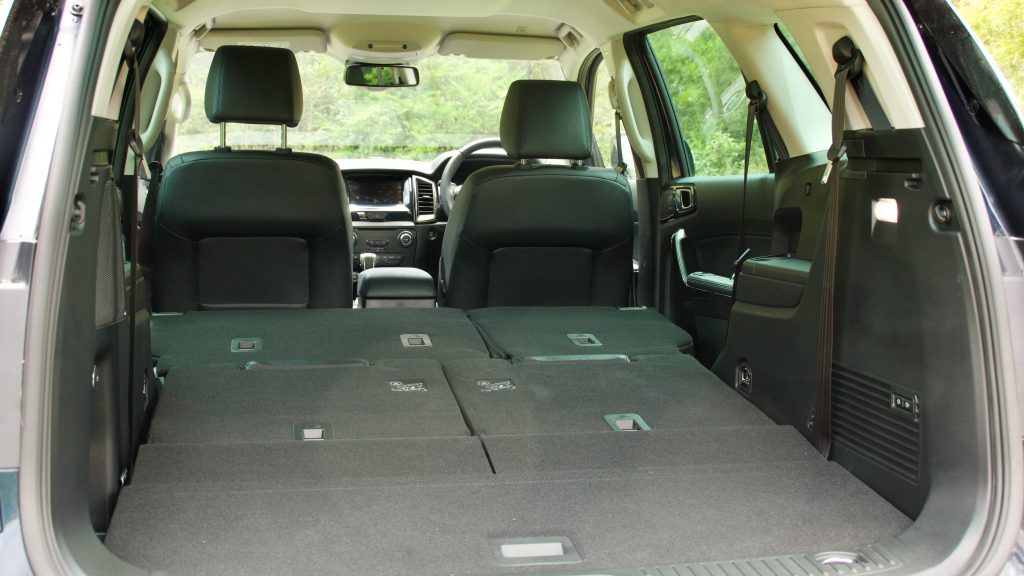
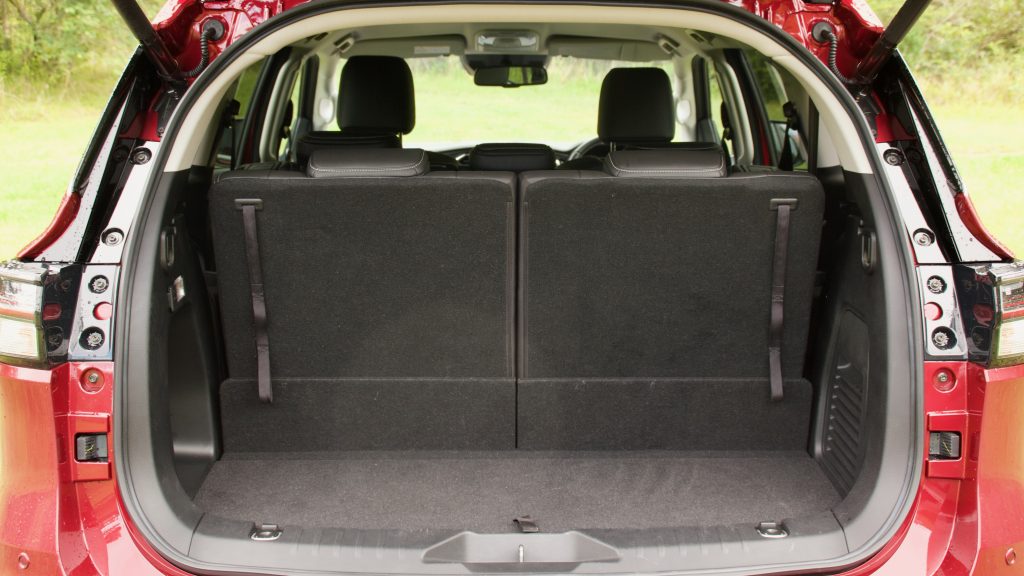
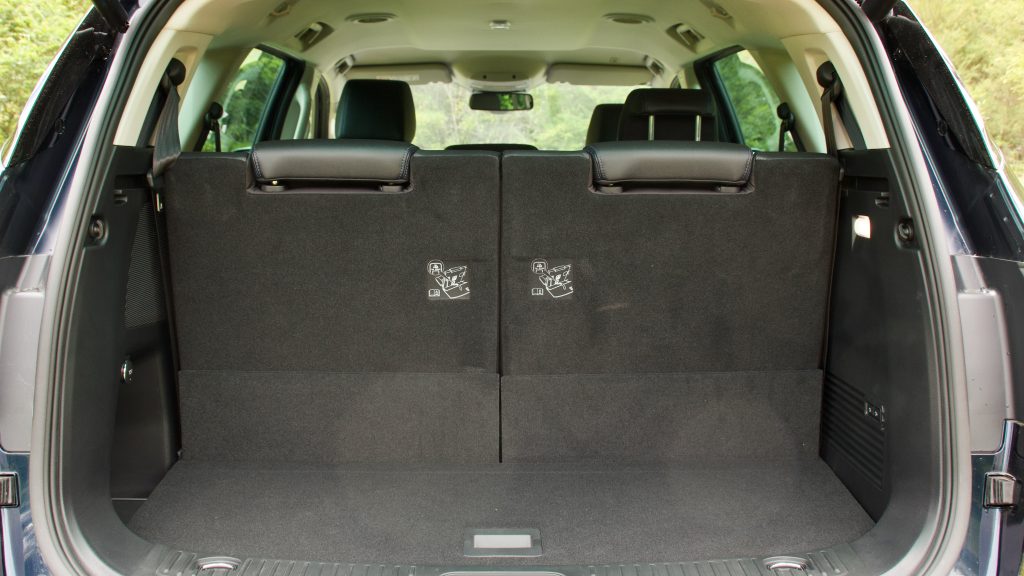
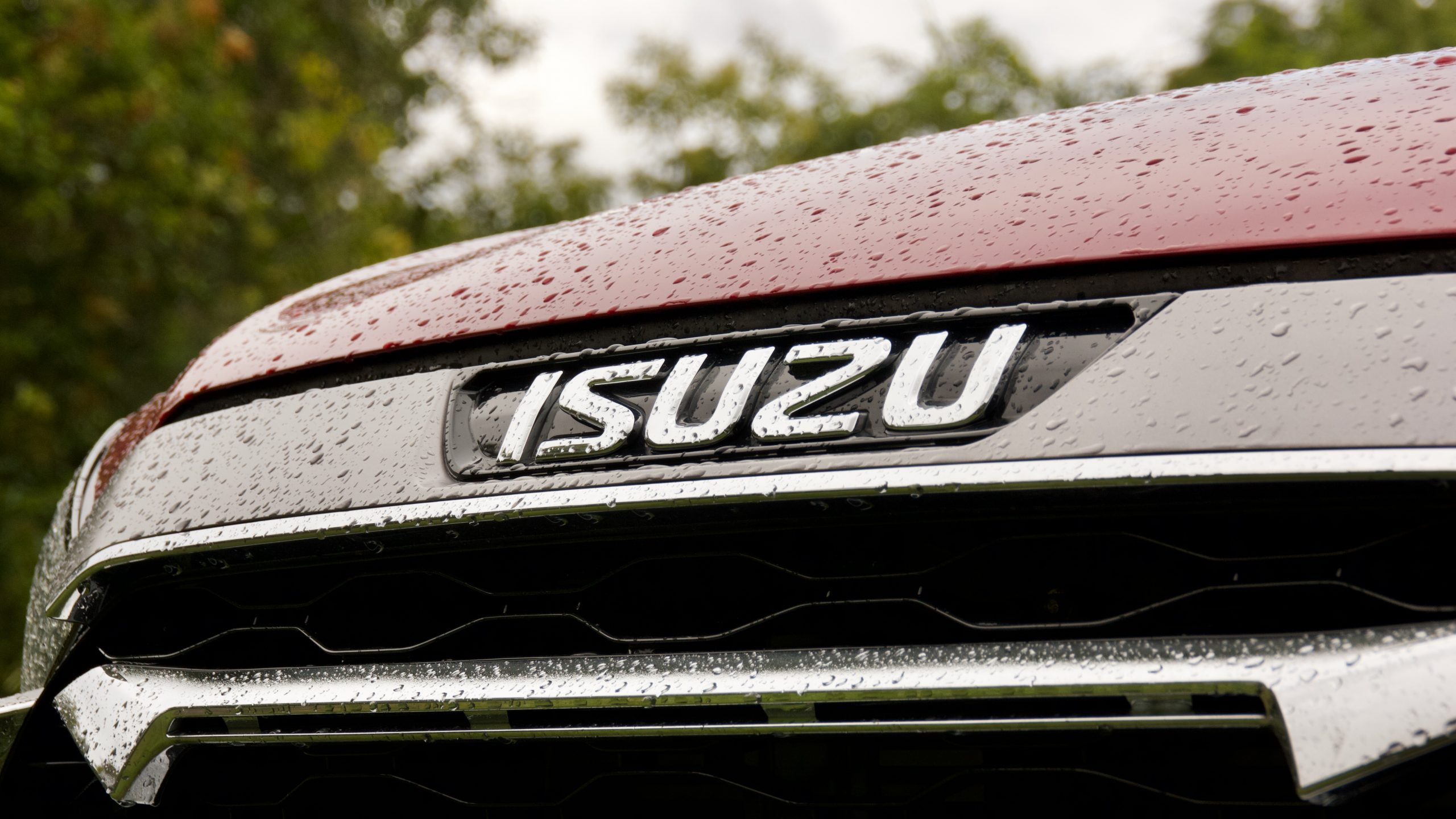
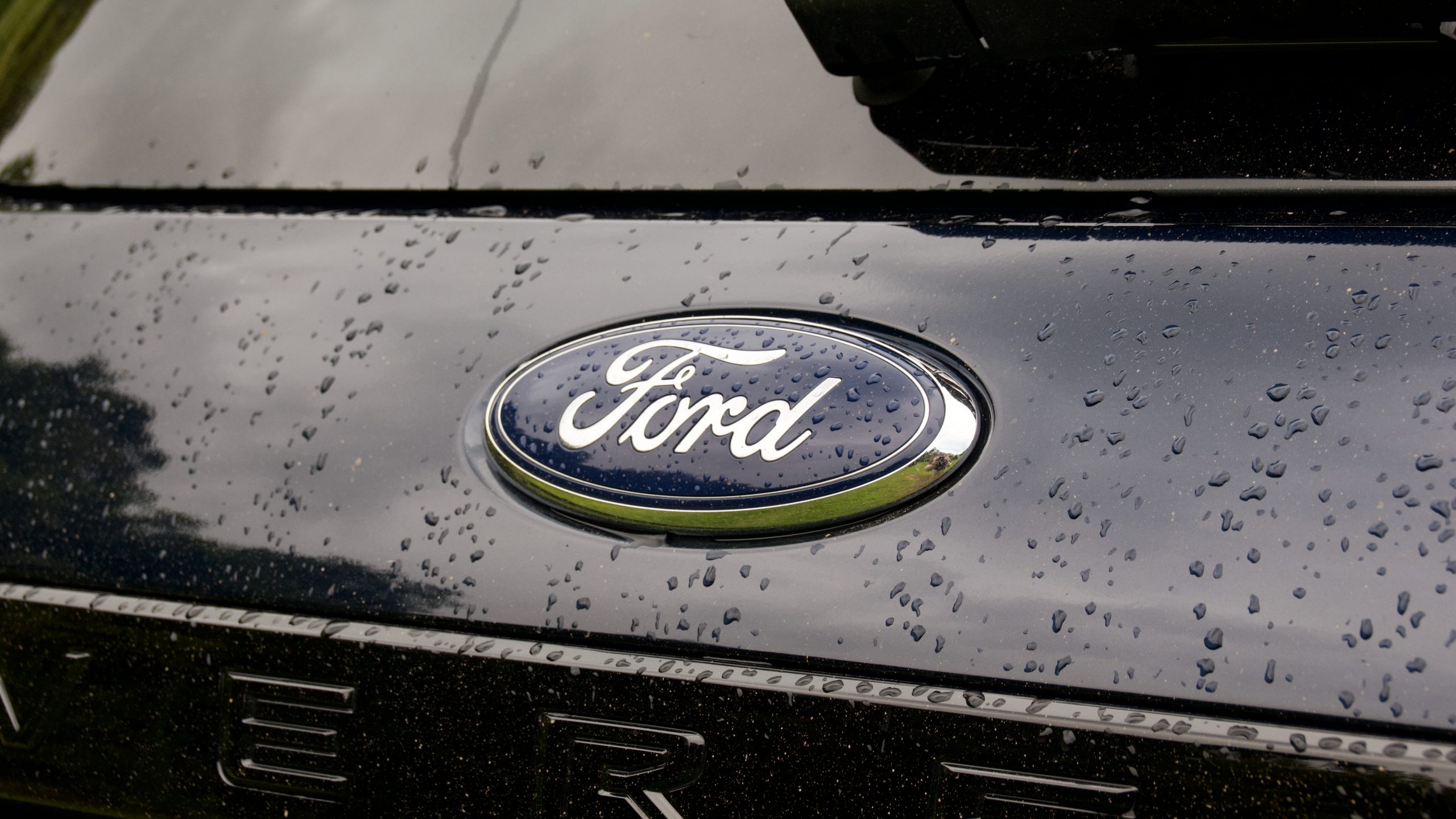
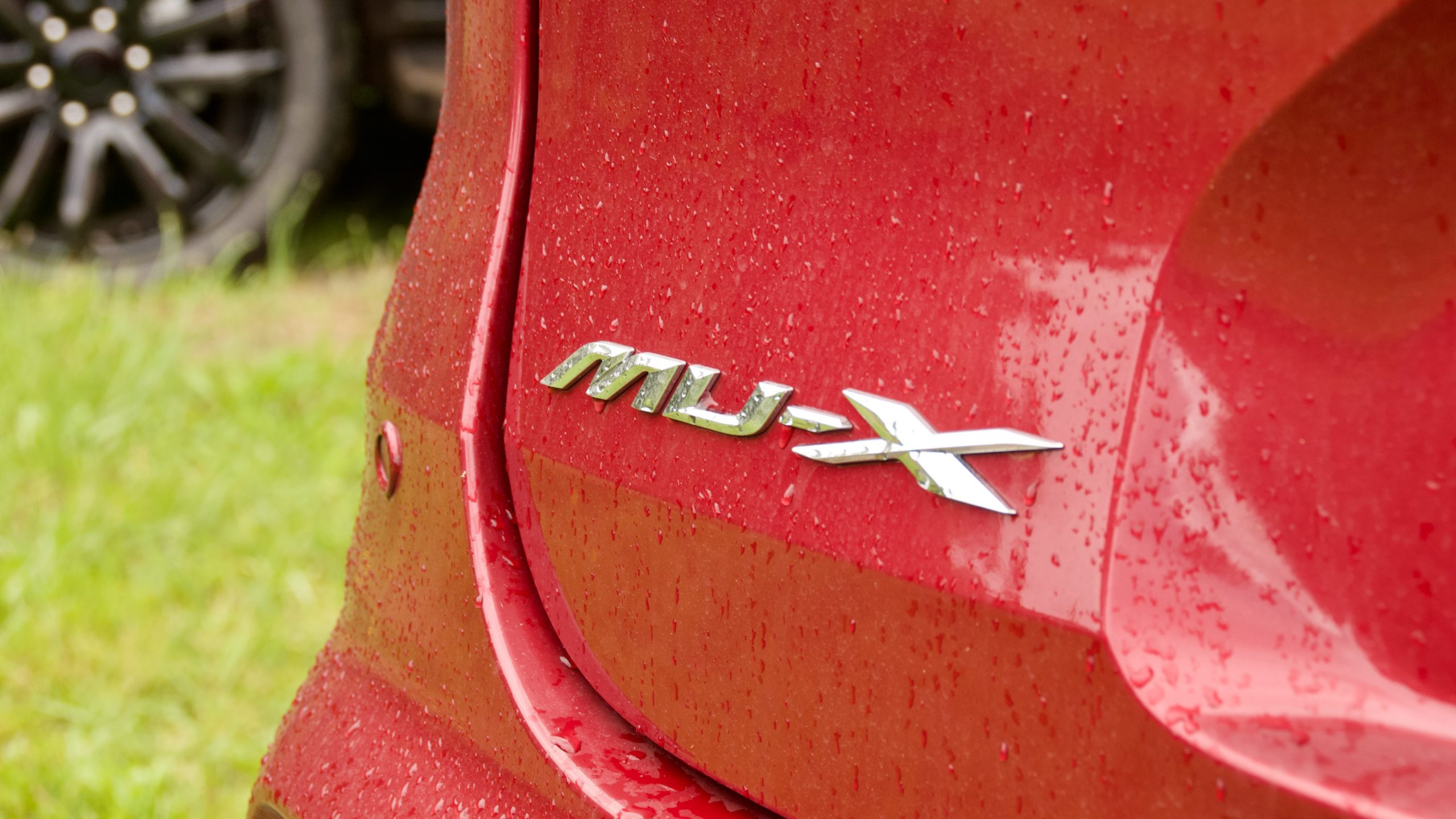
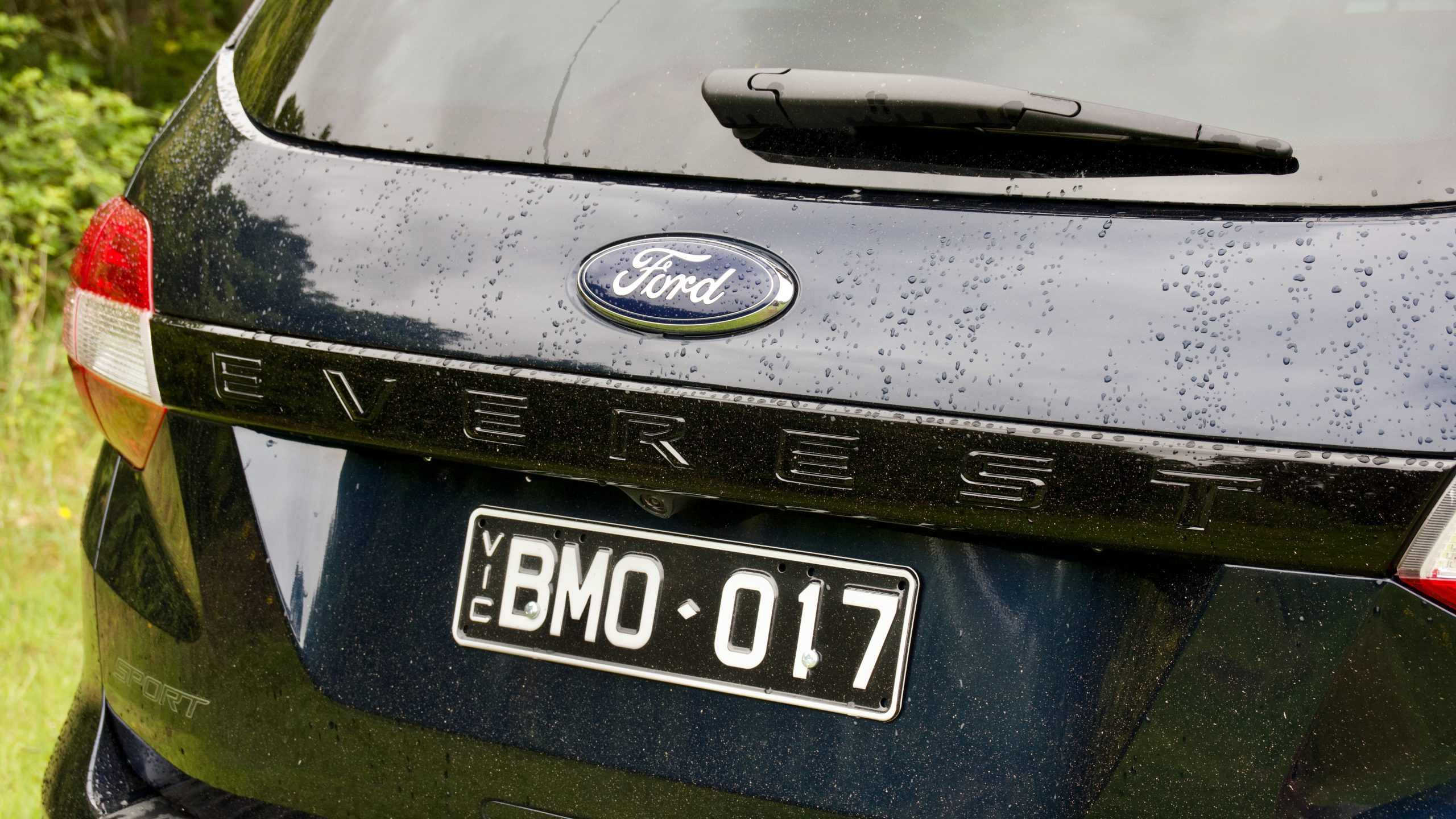
Leave a Reply